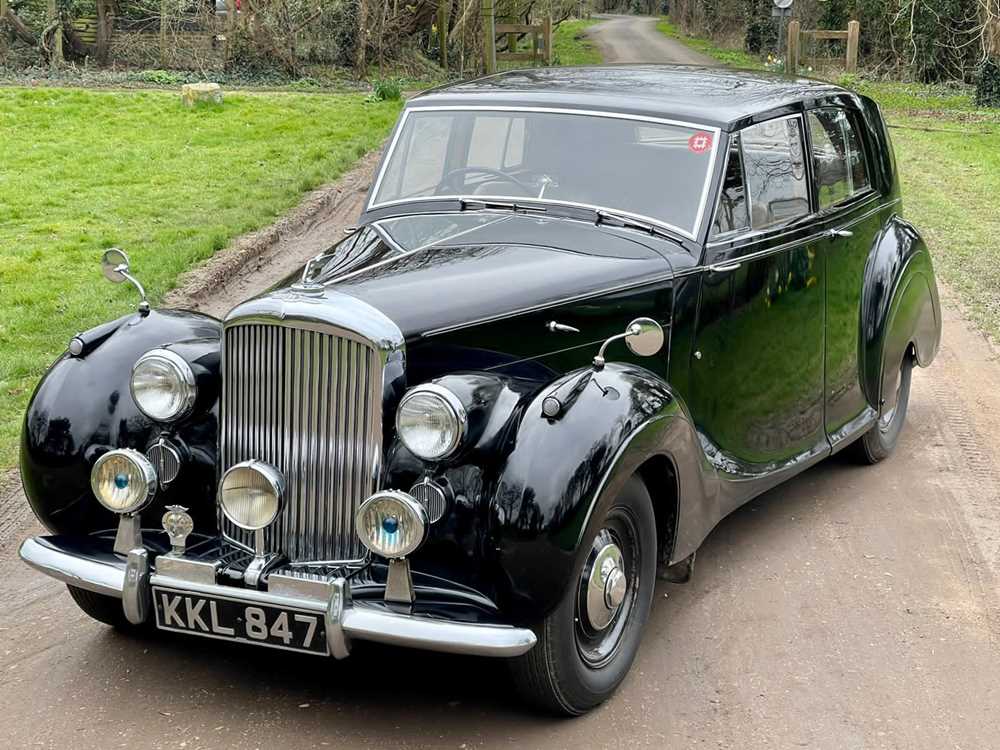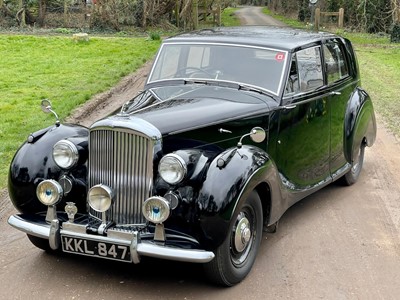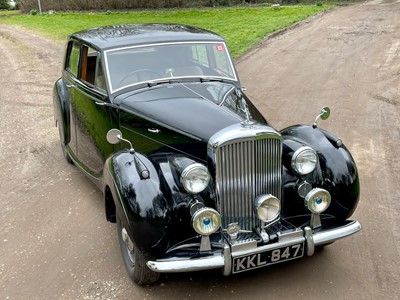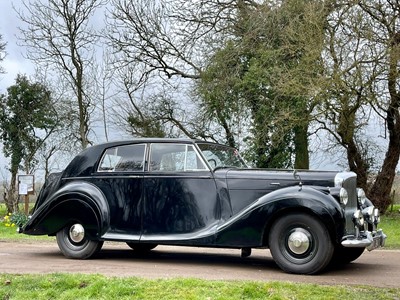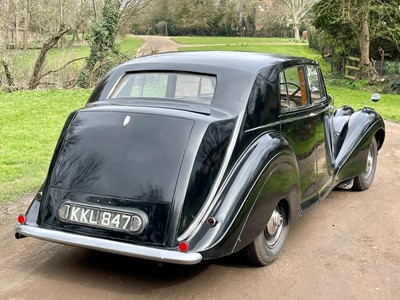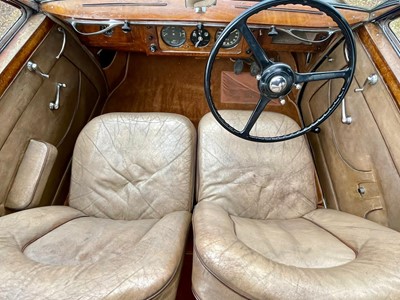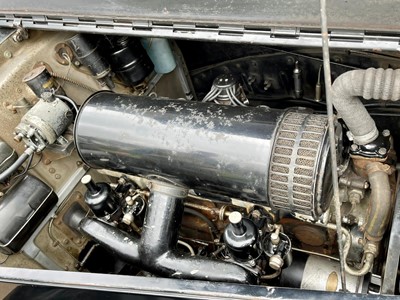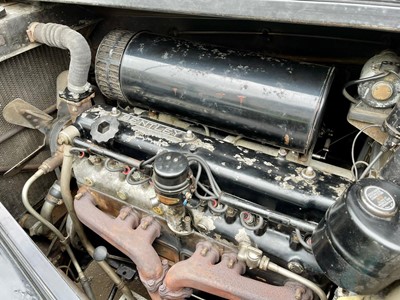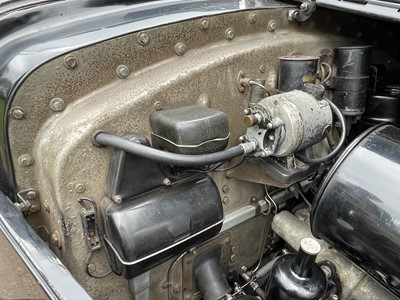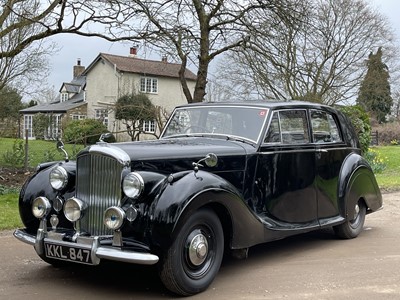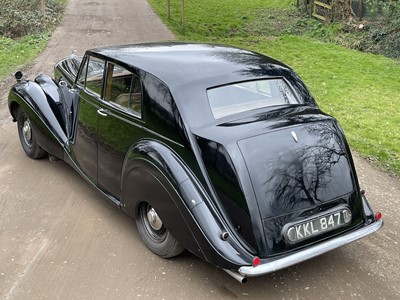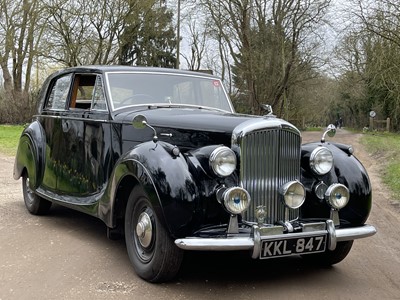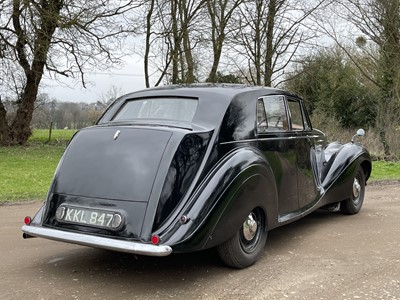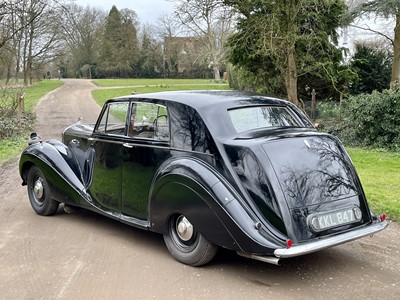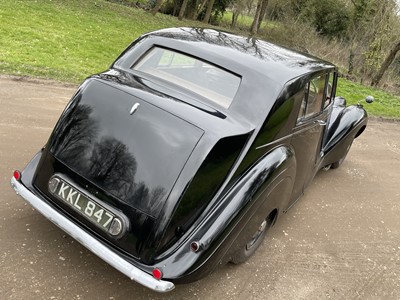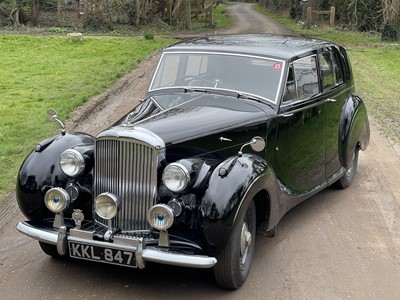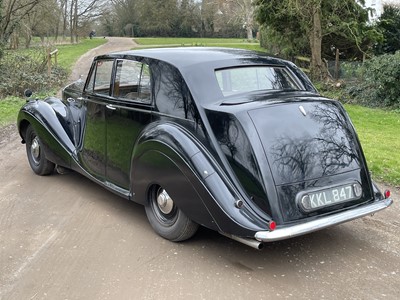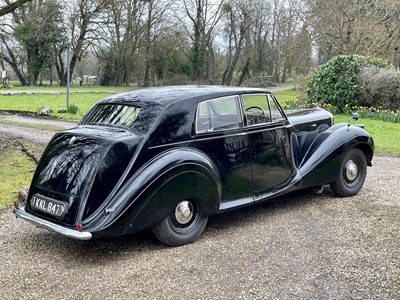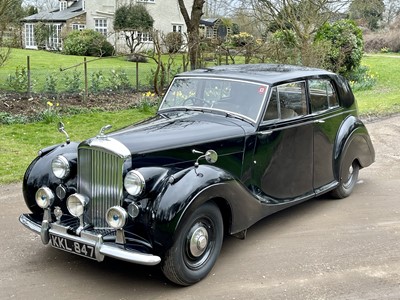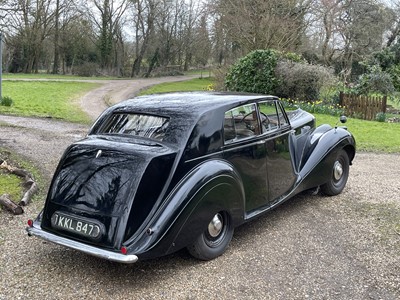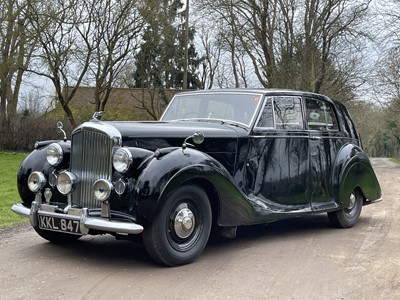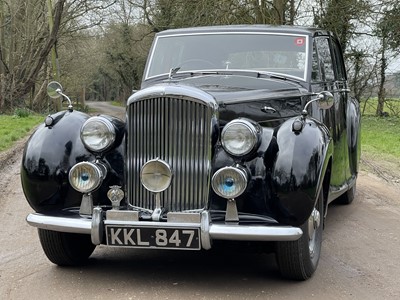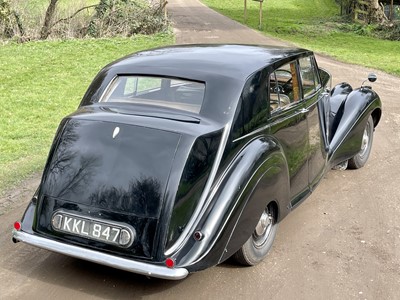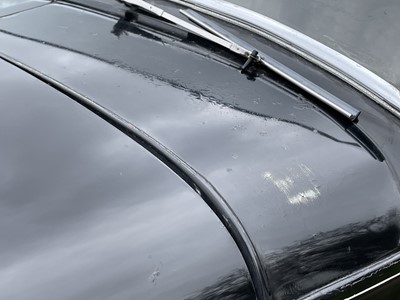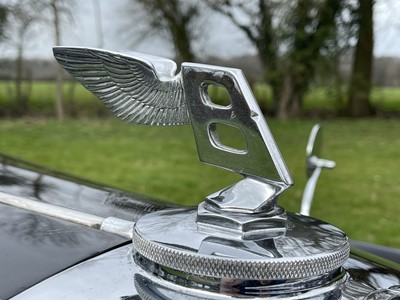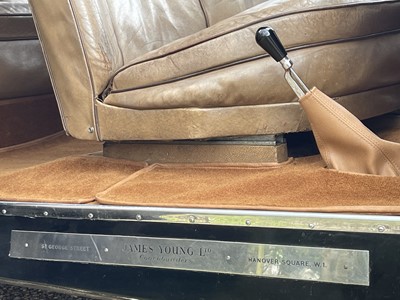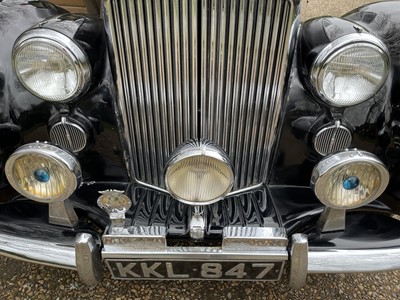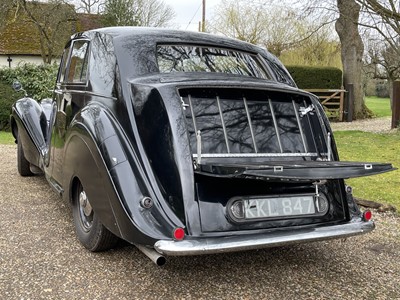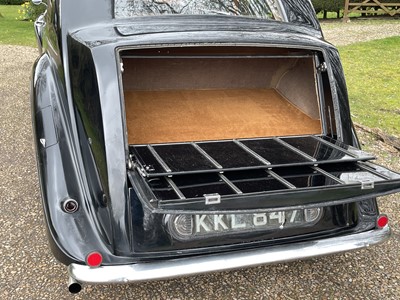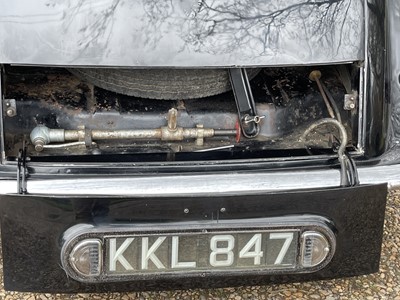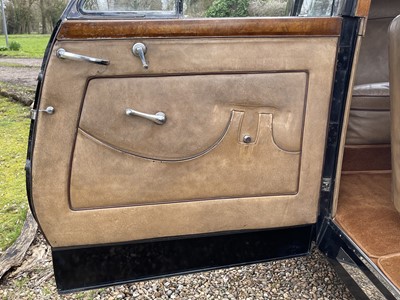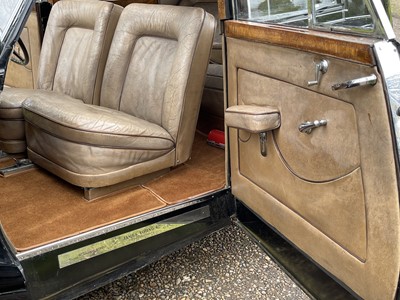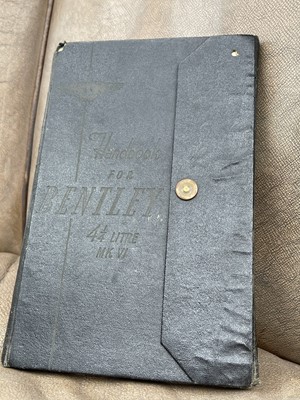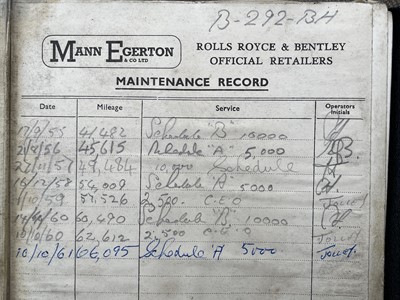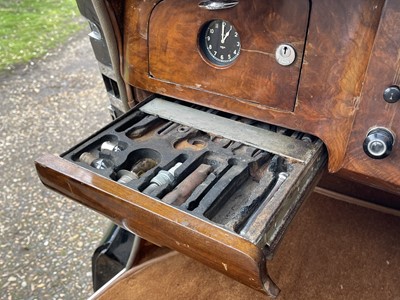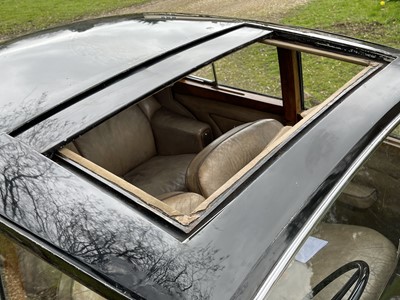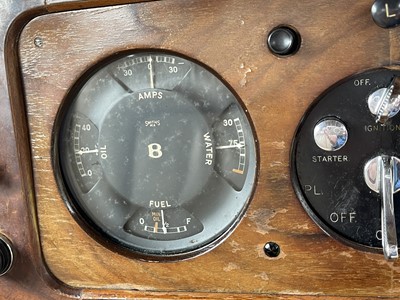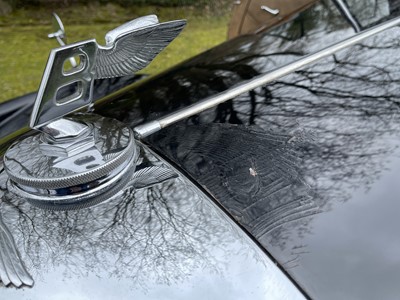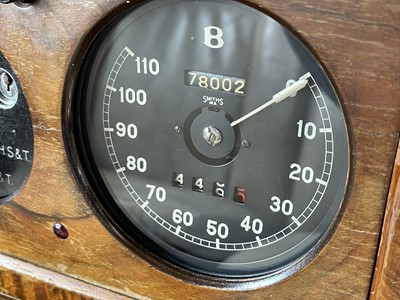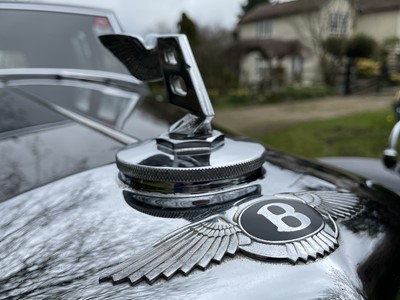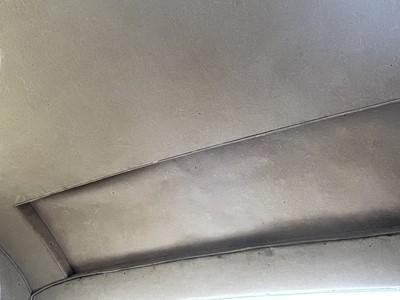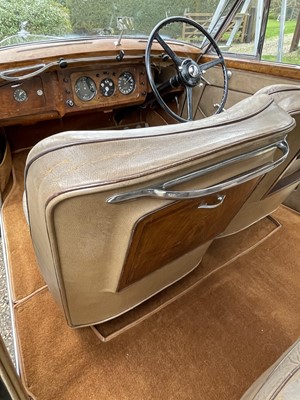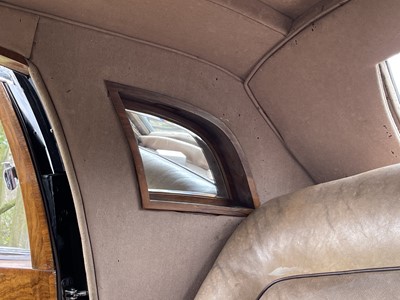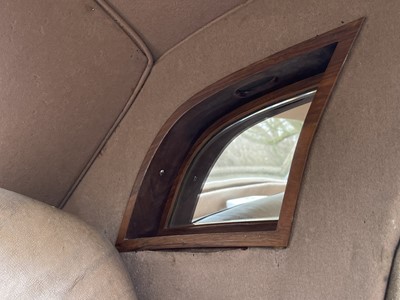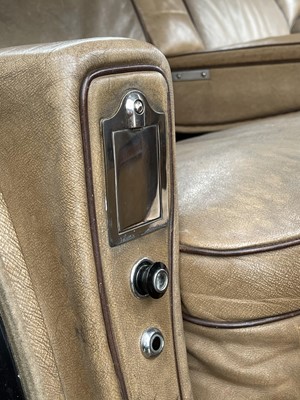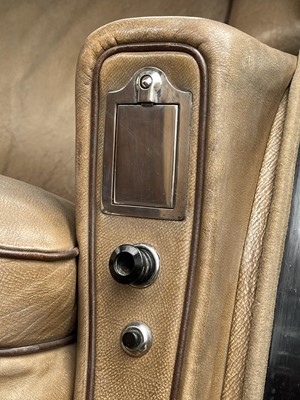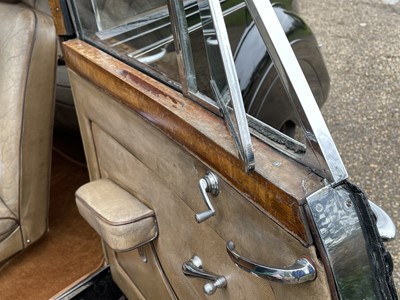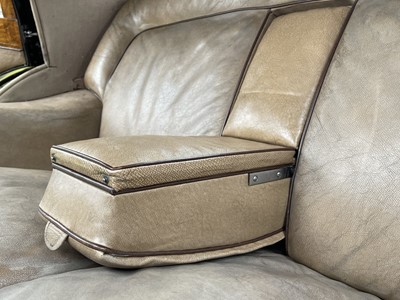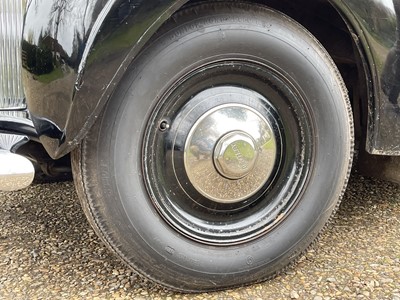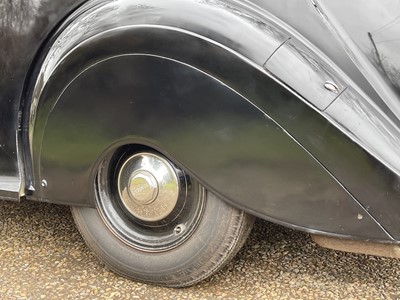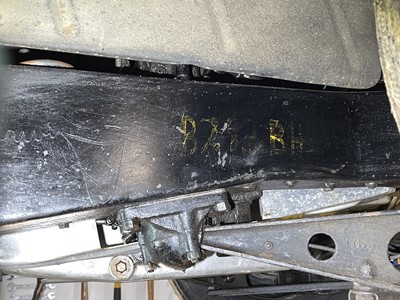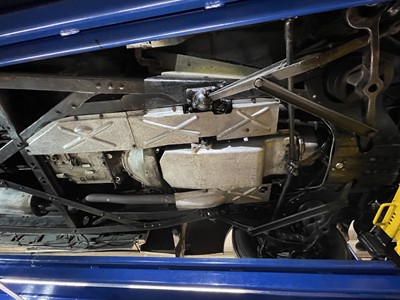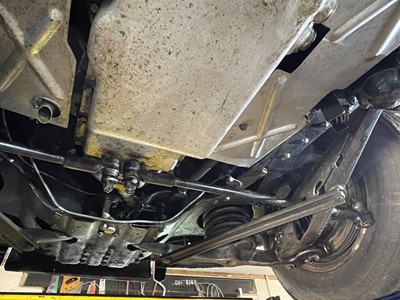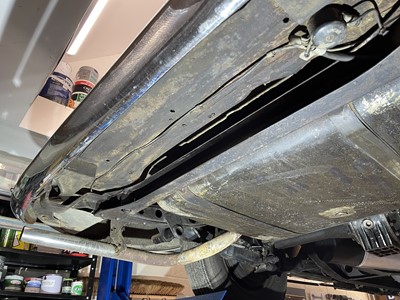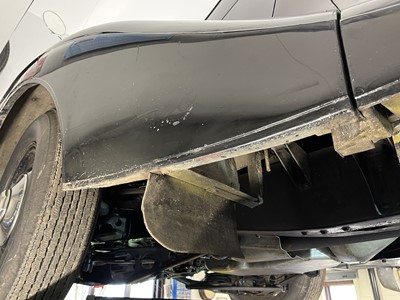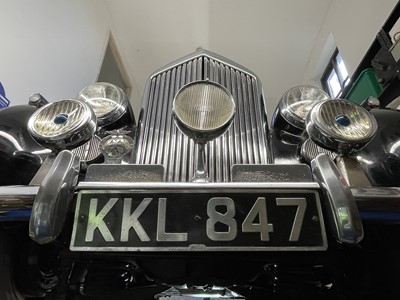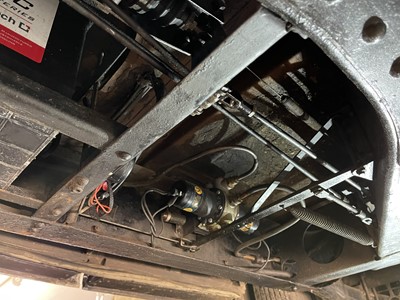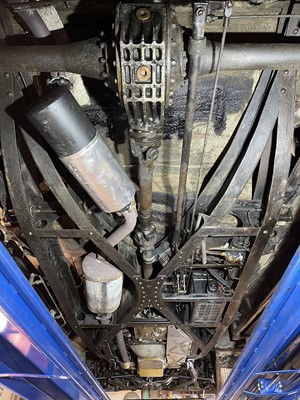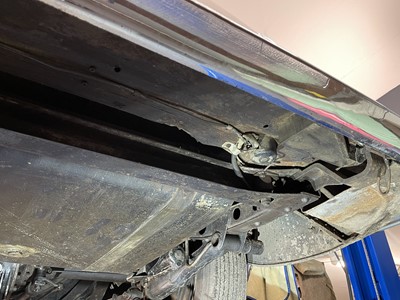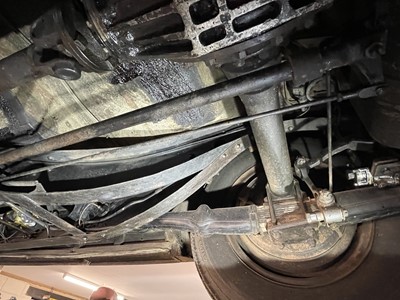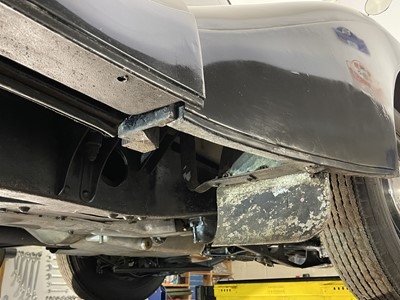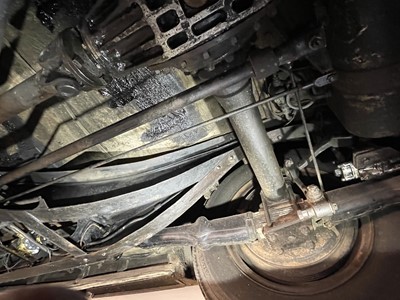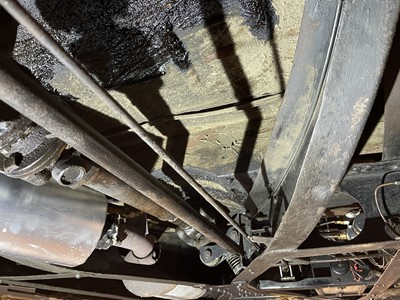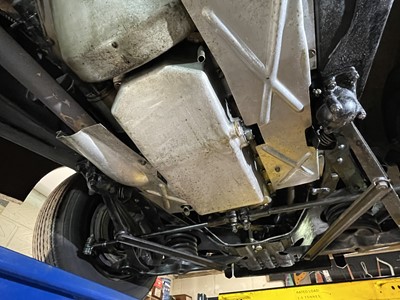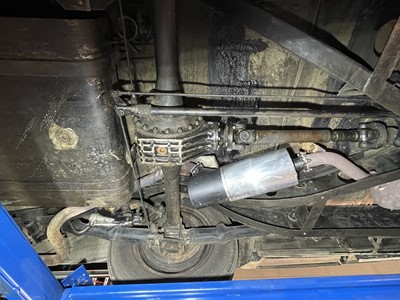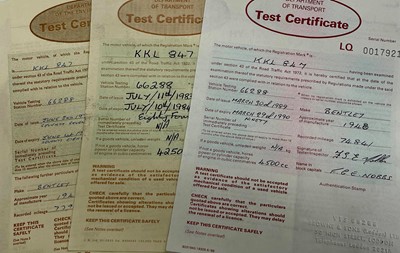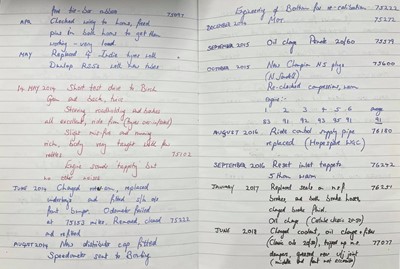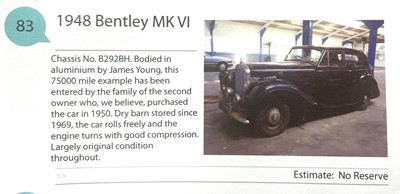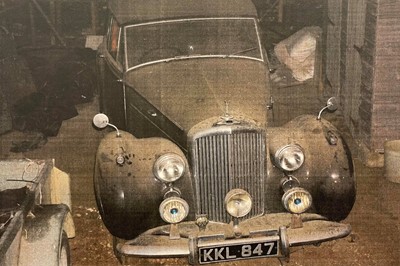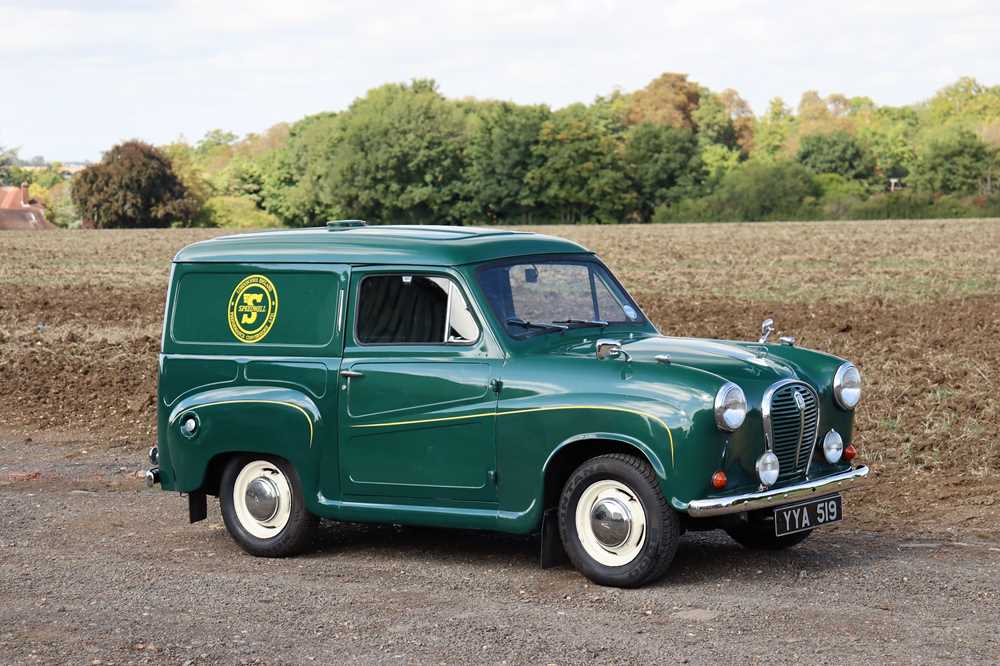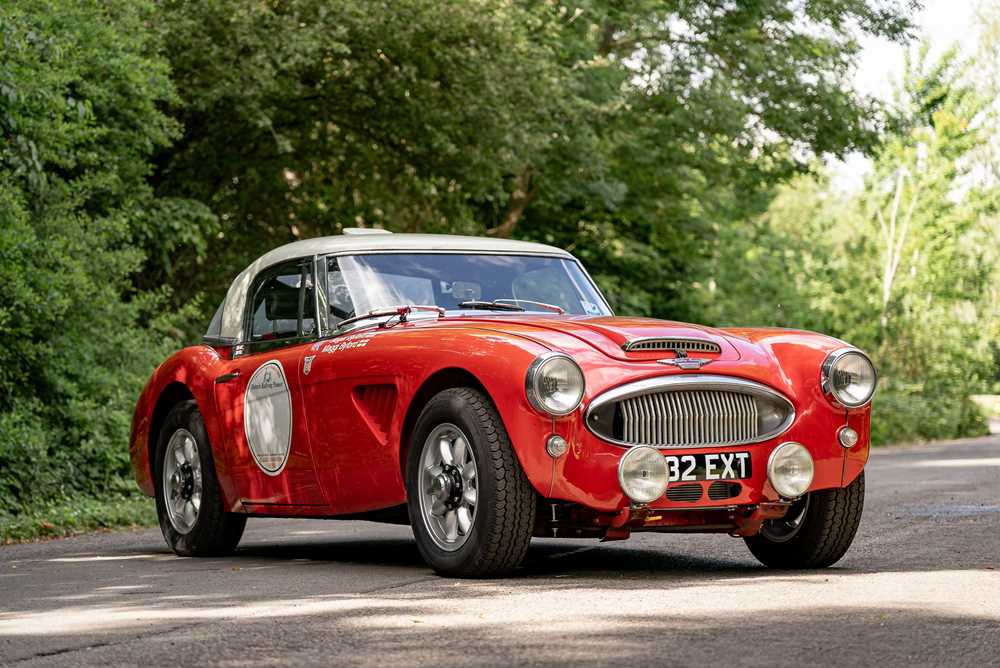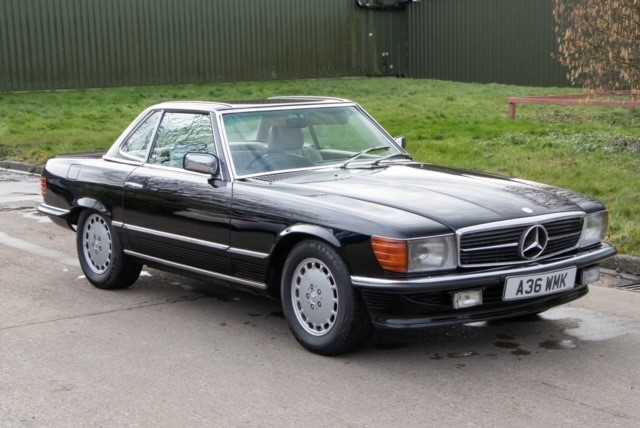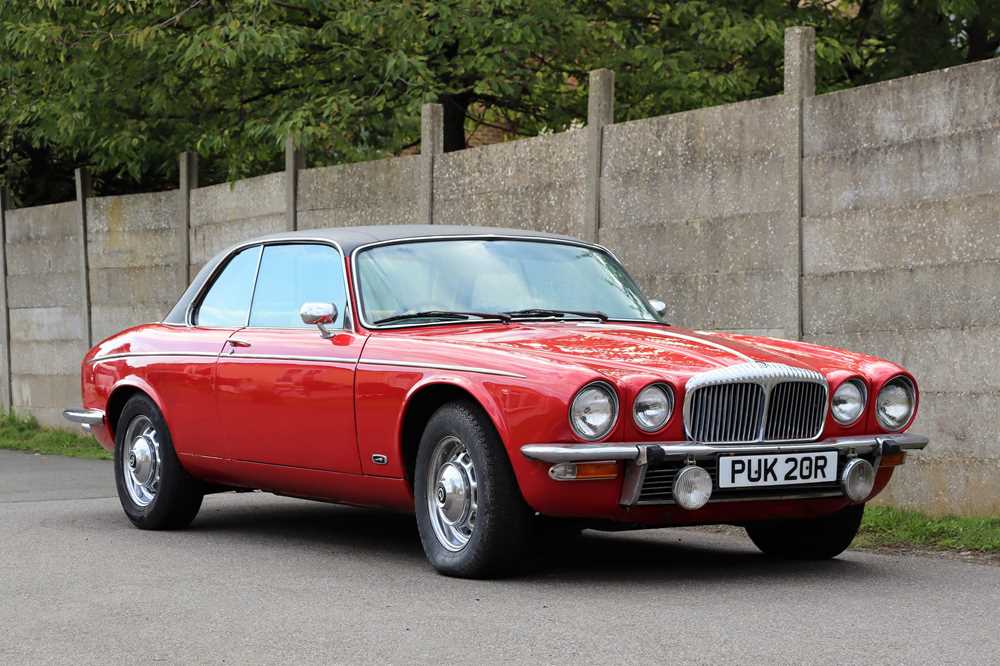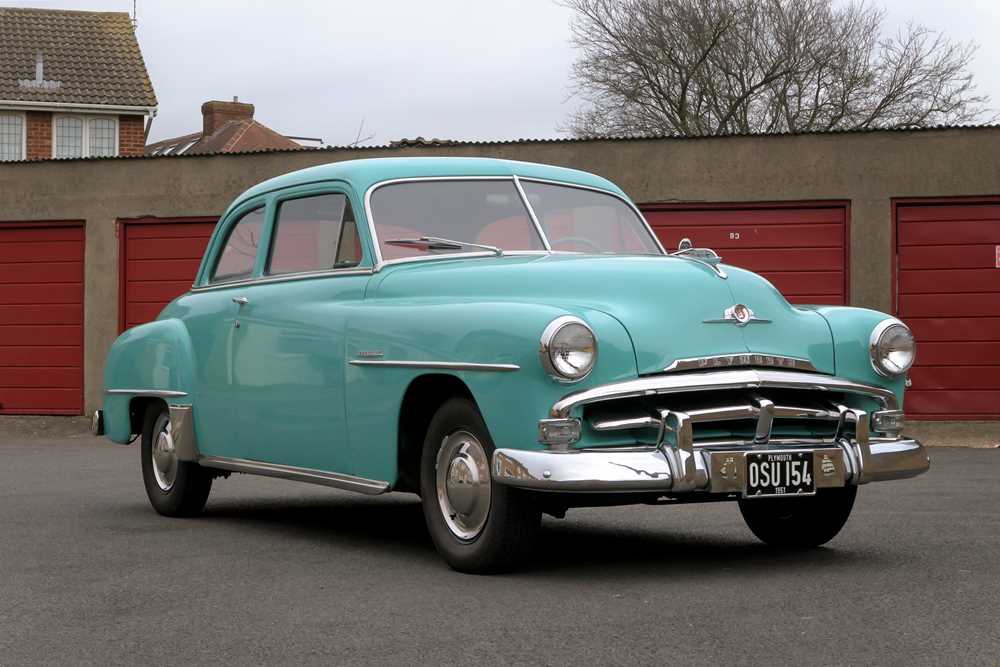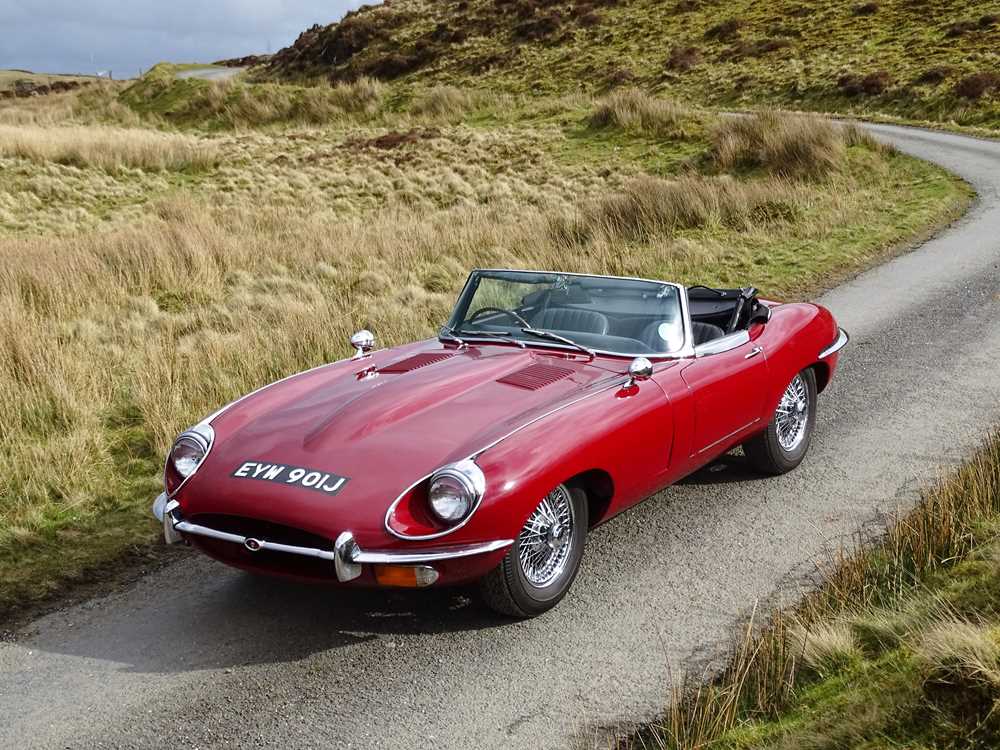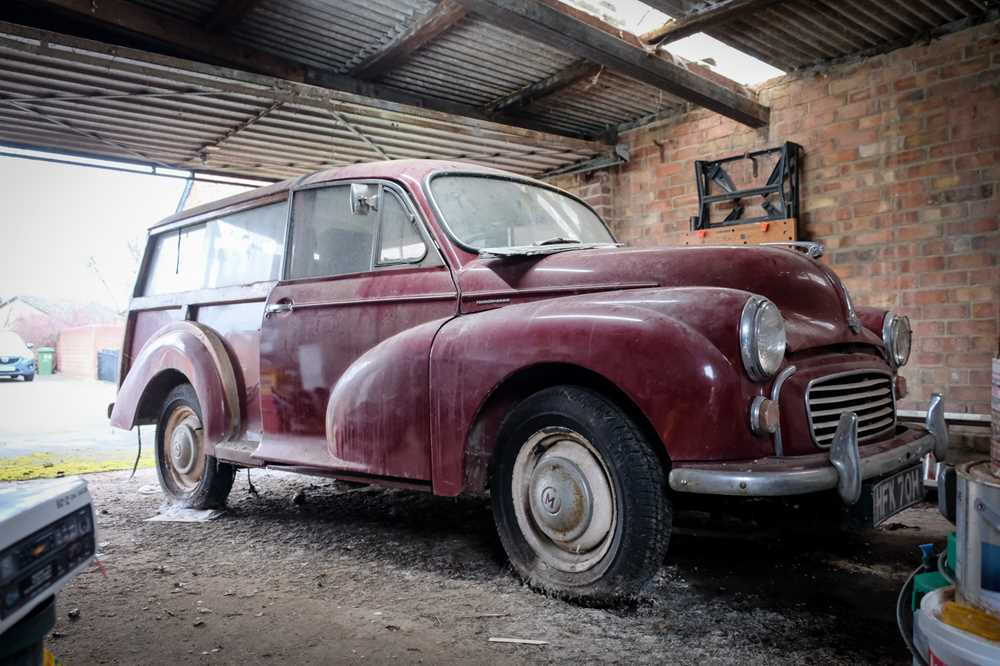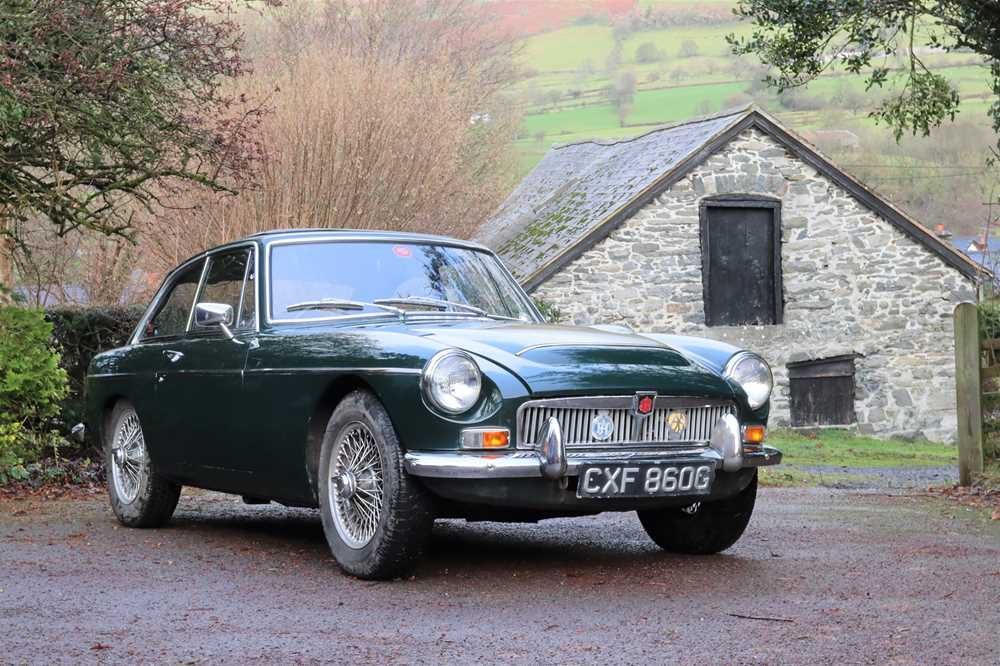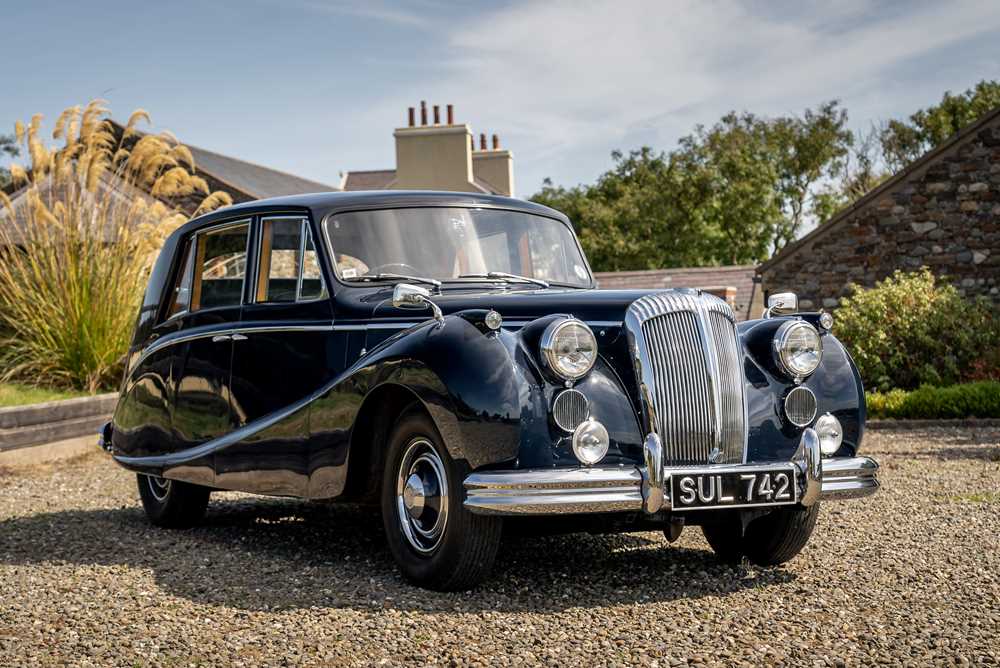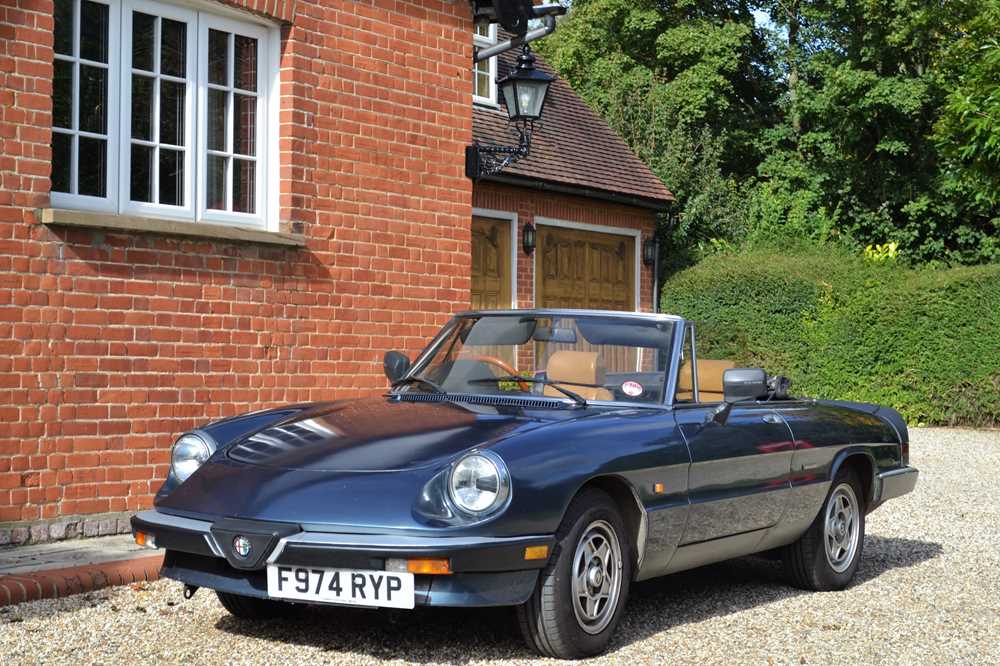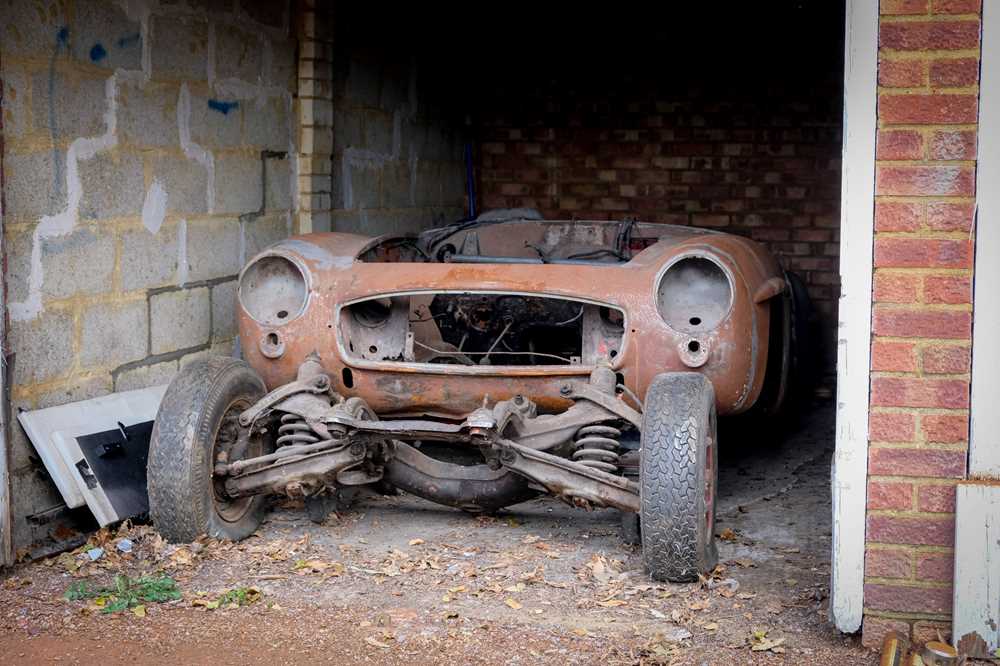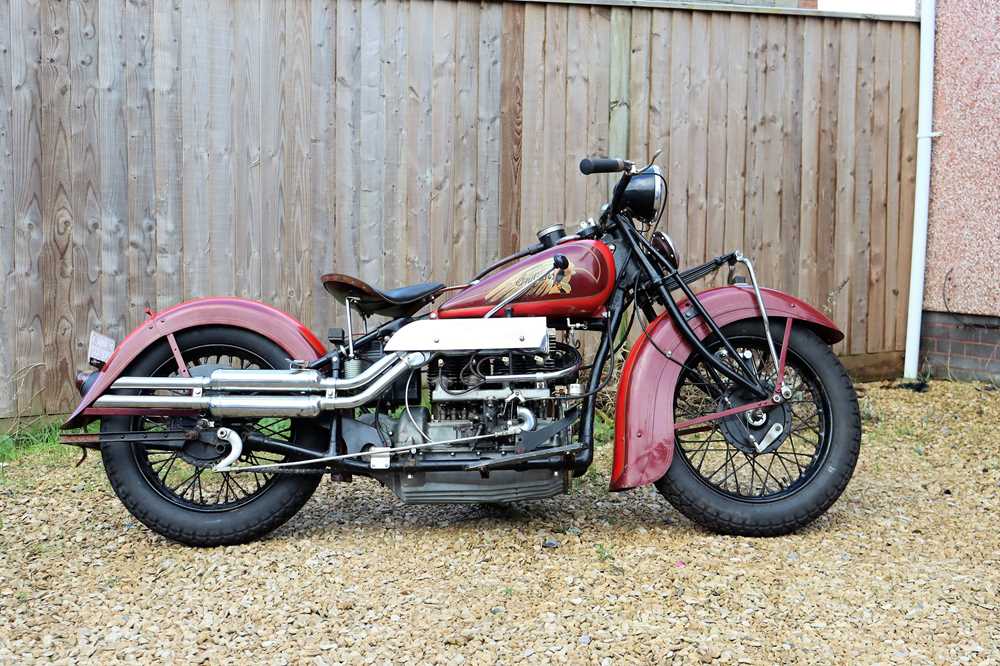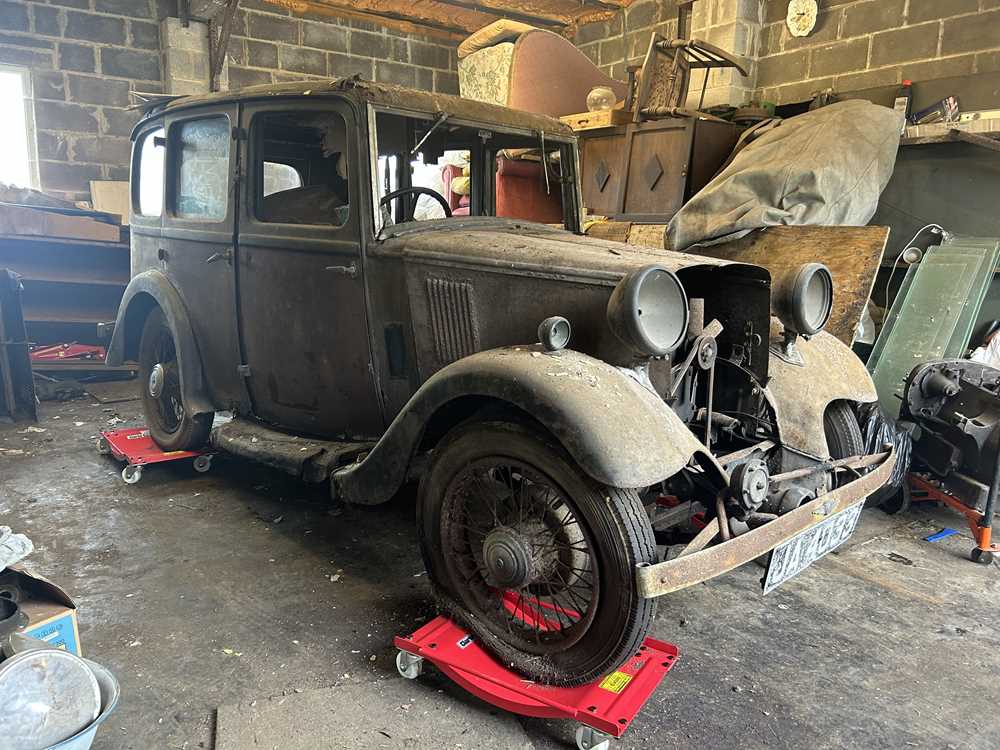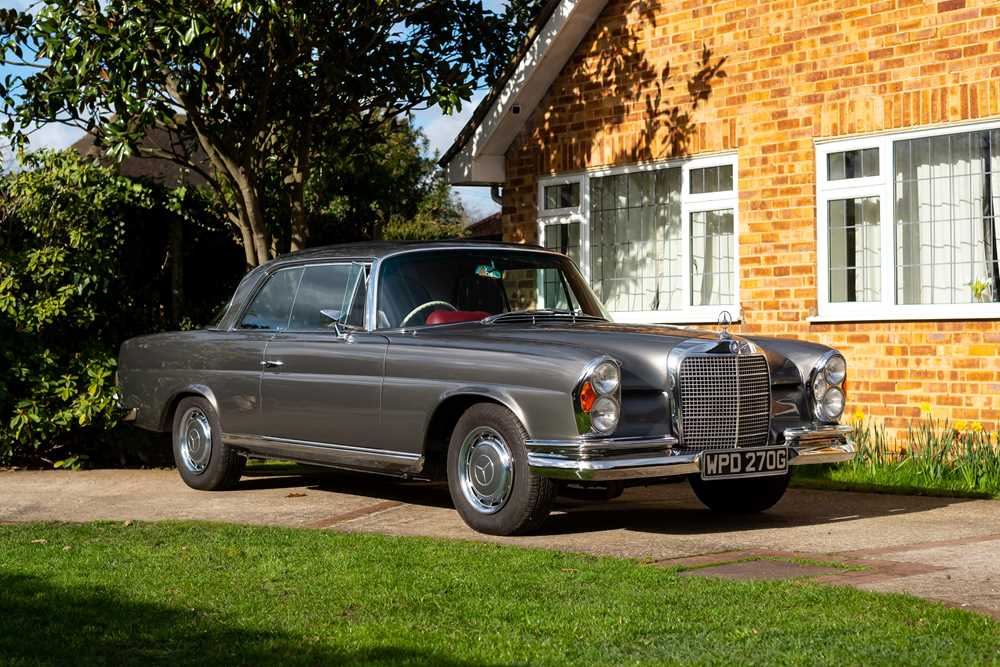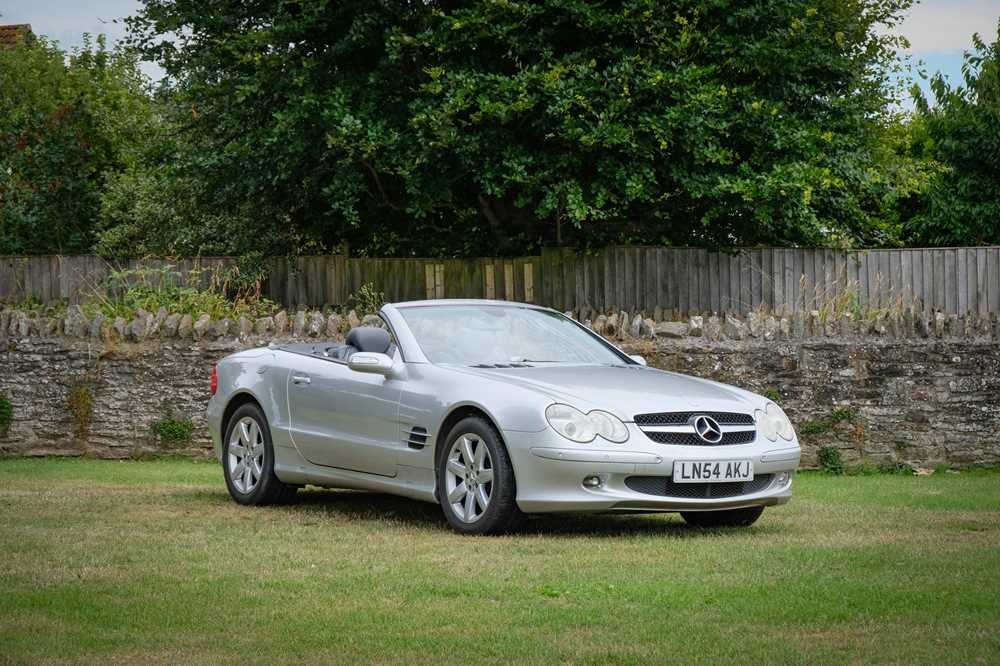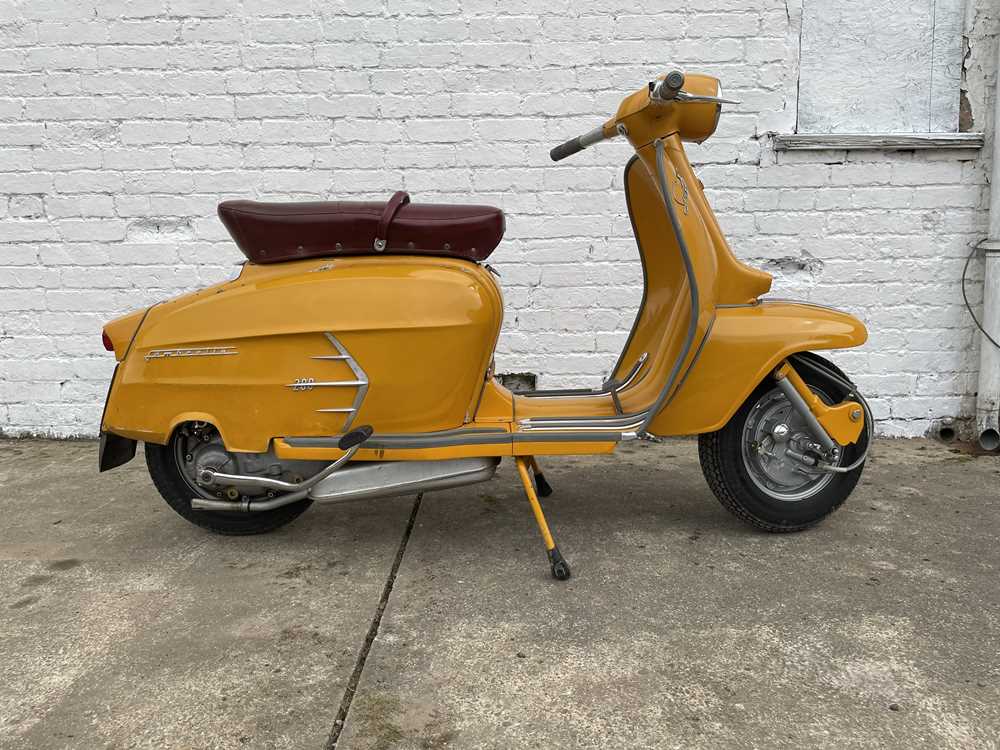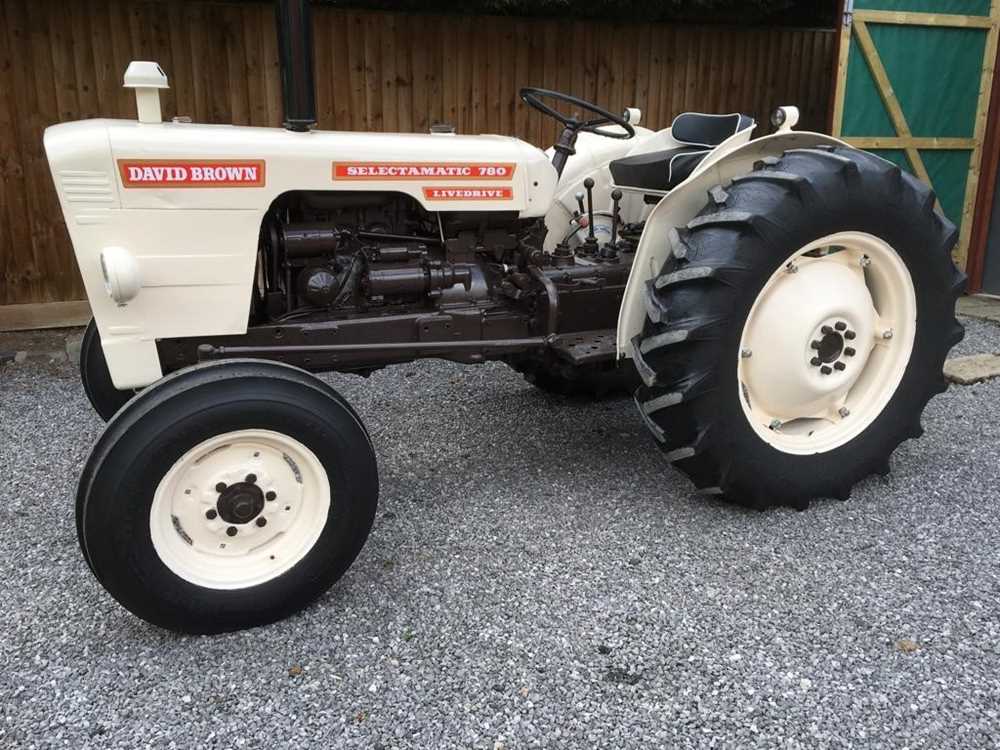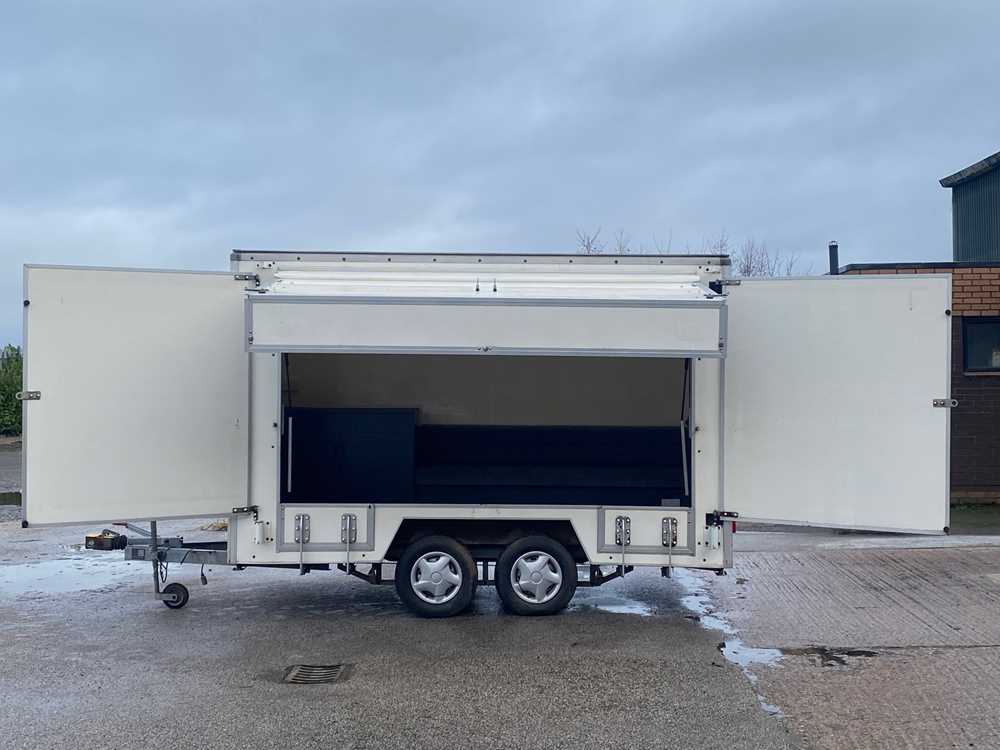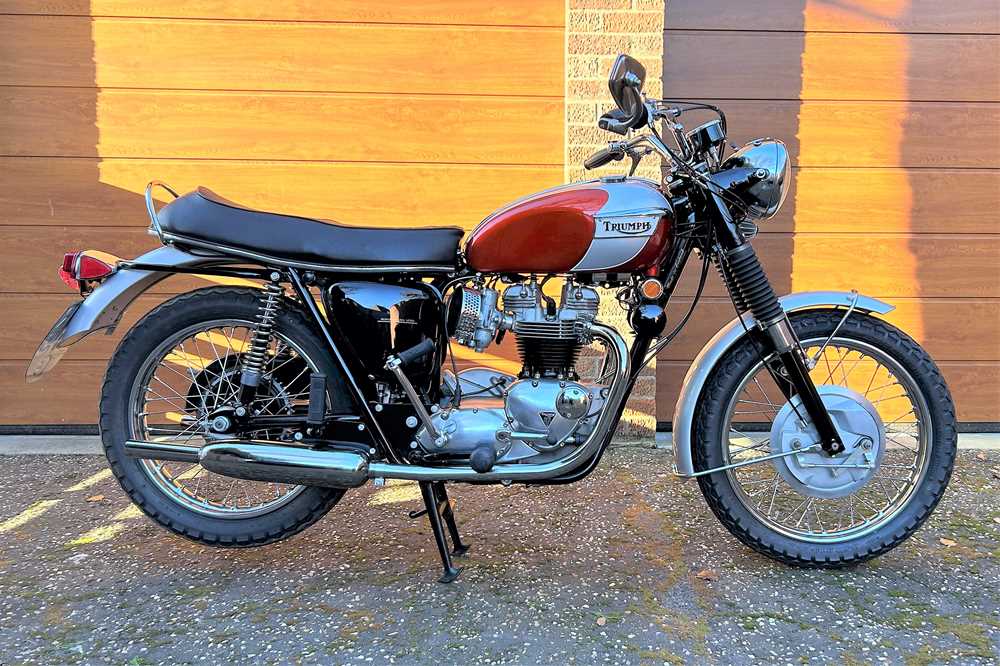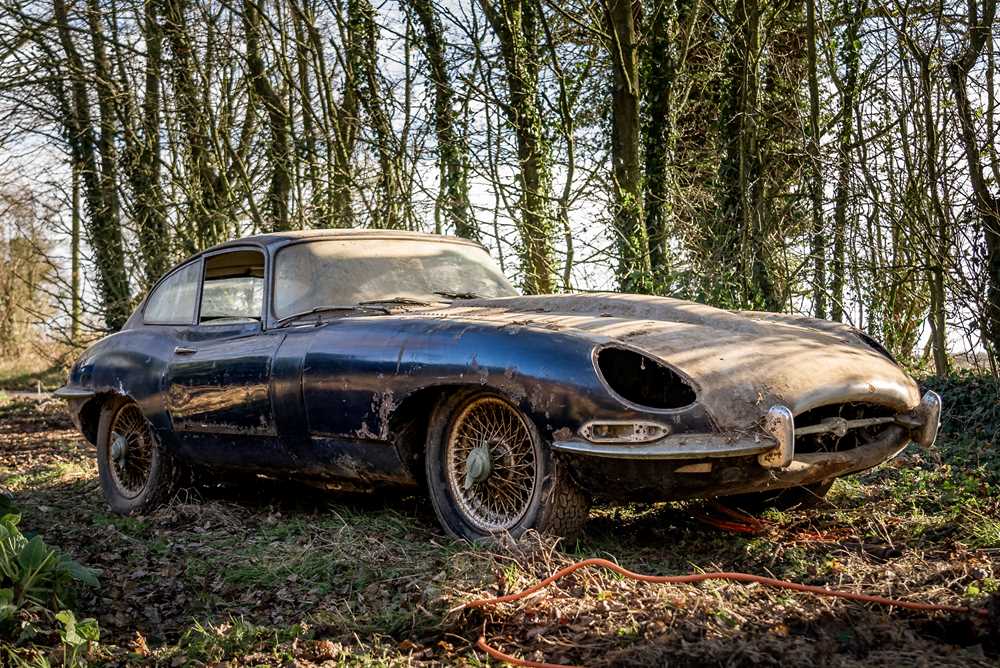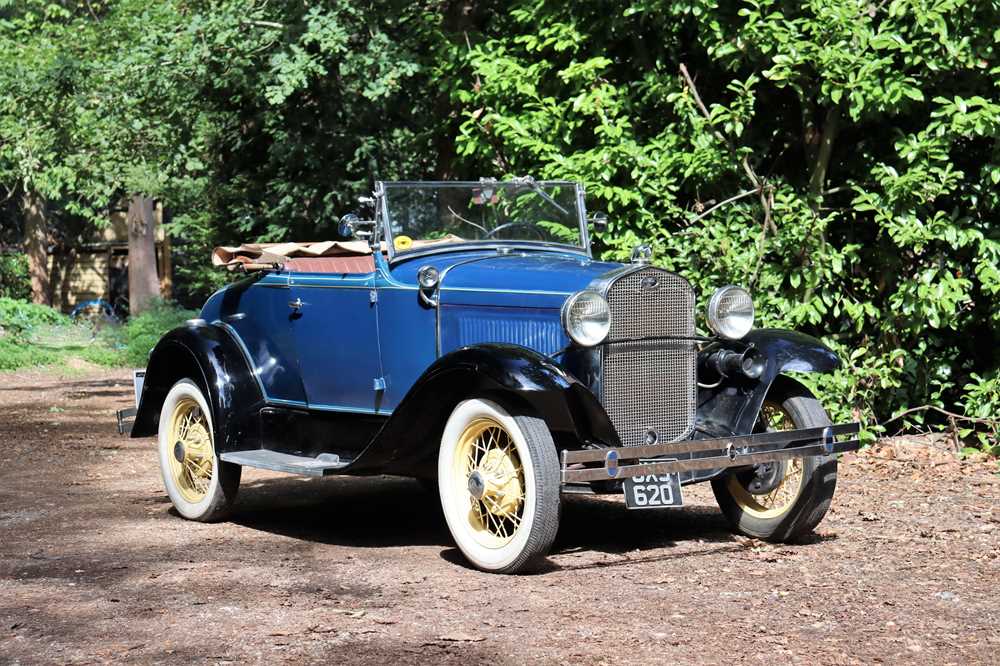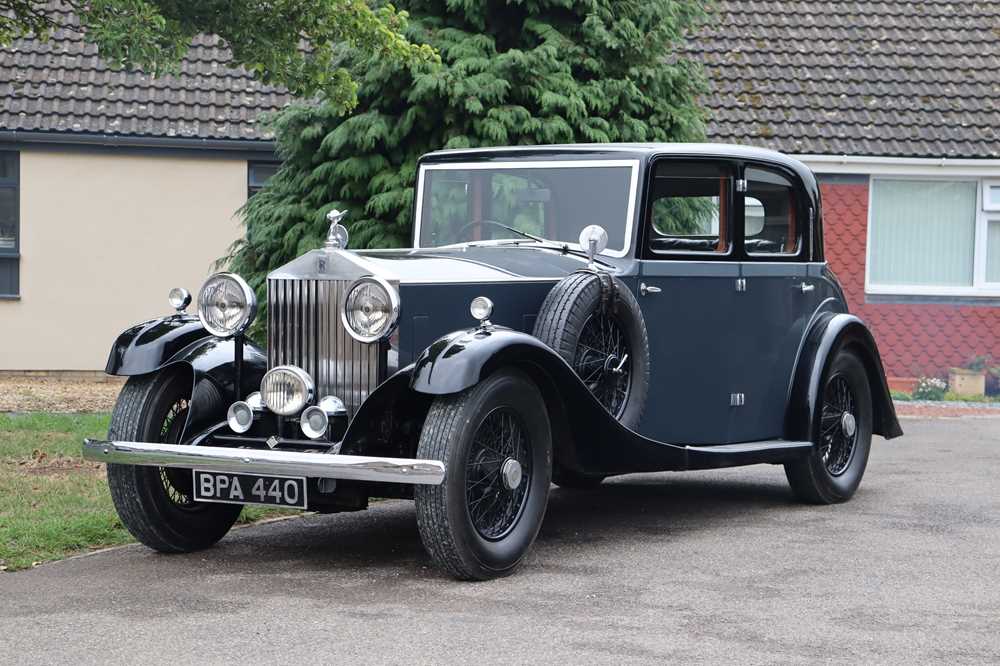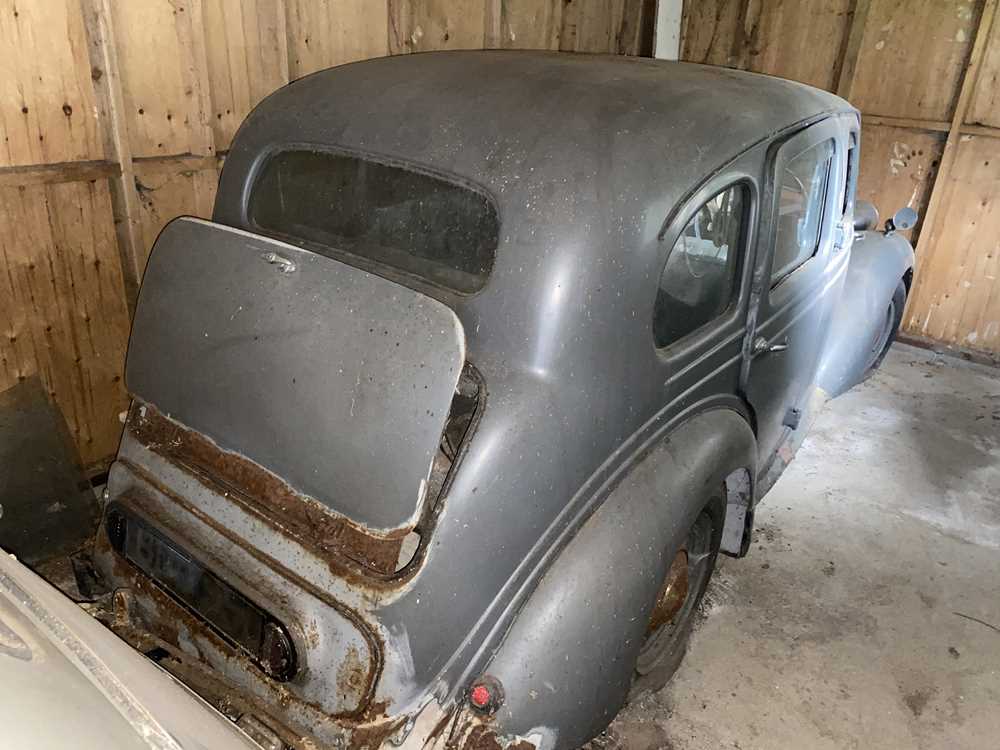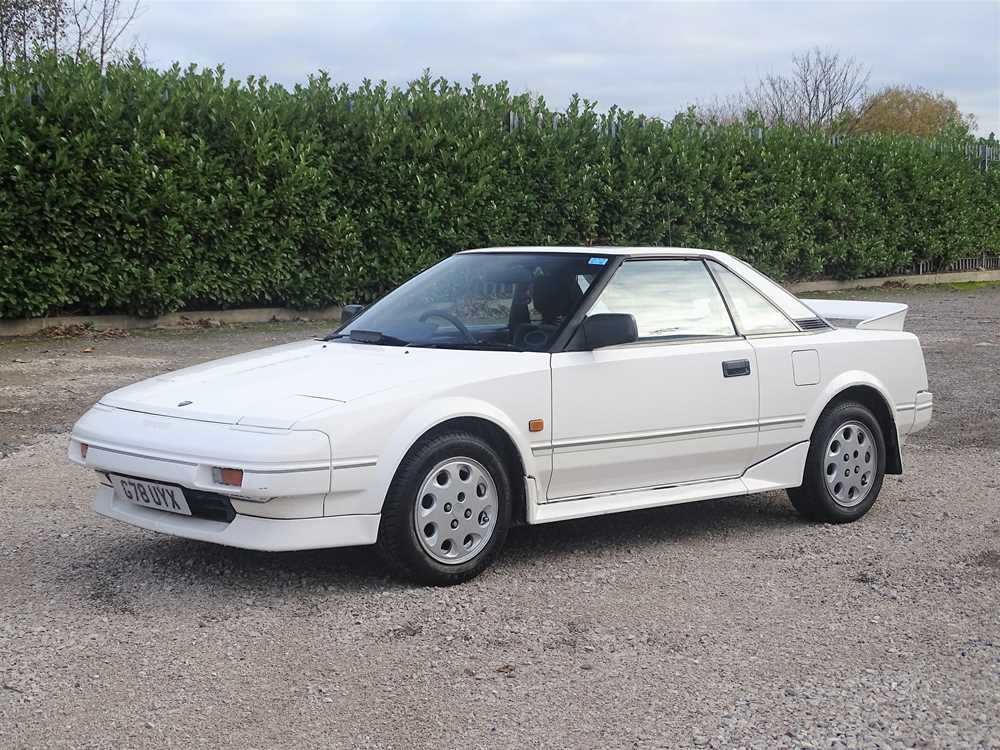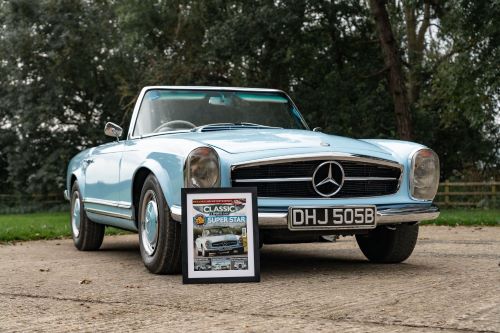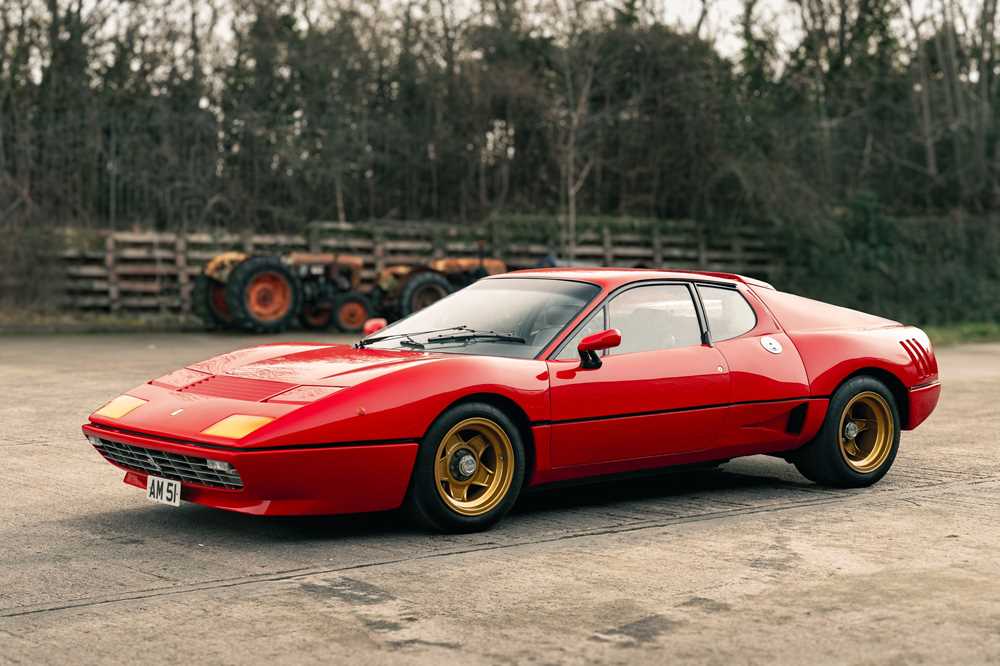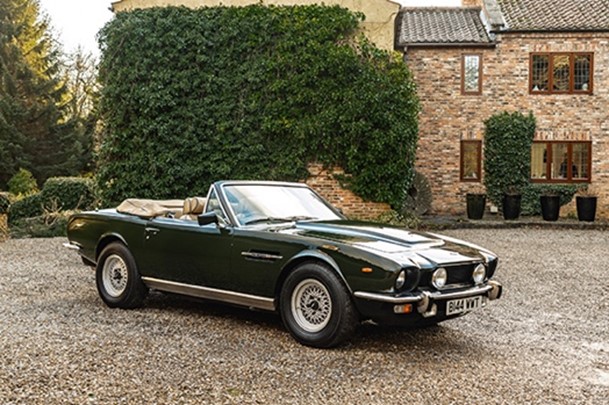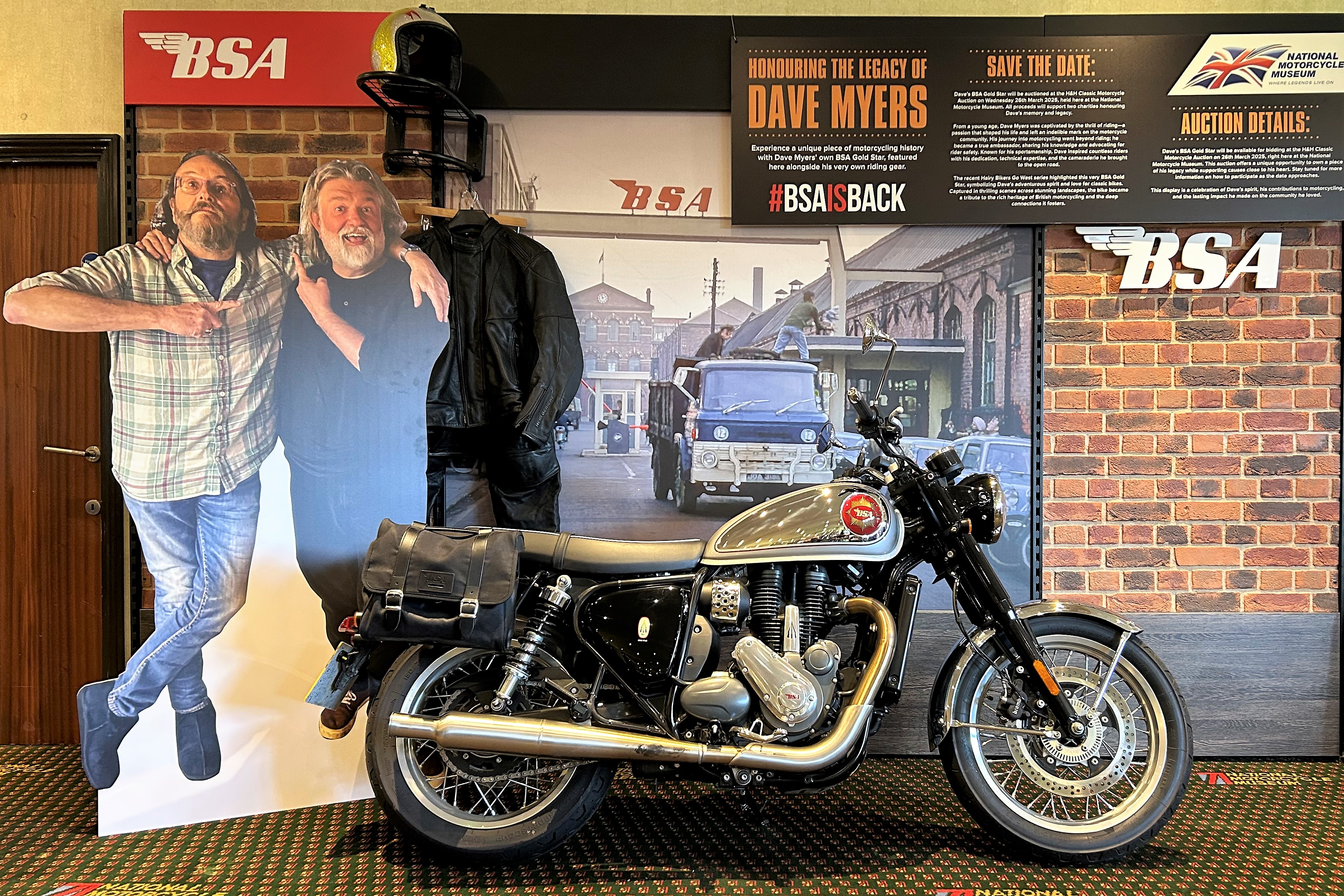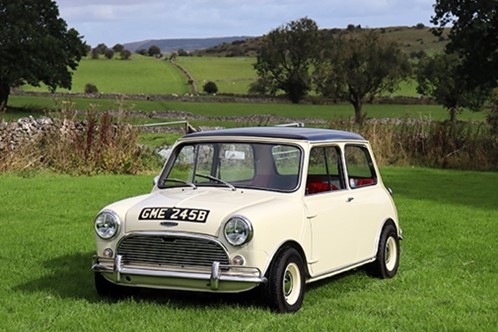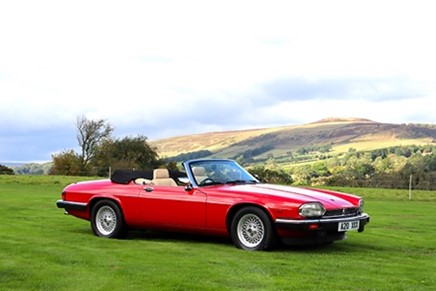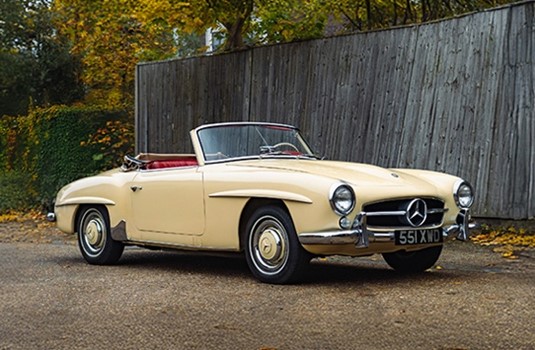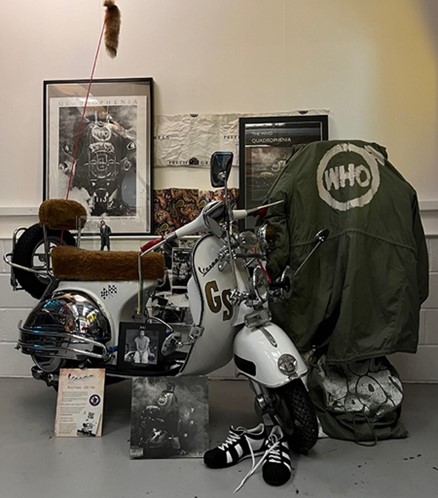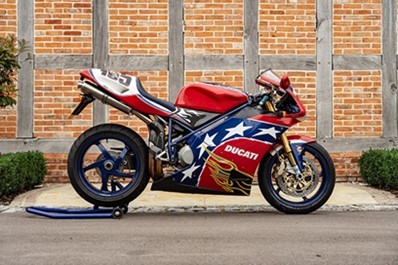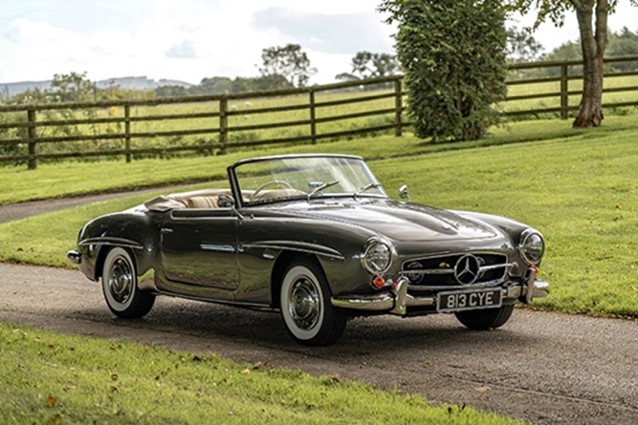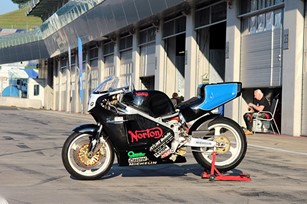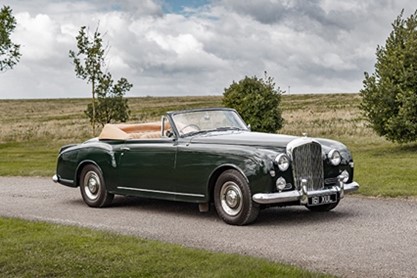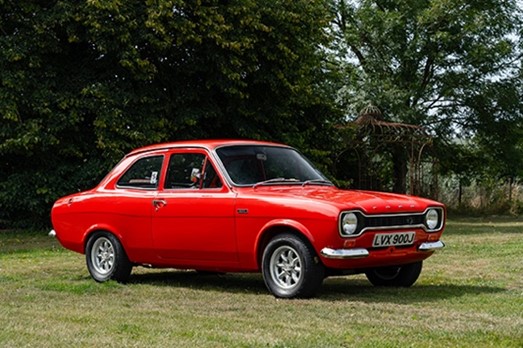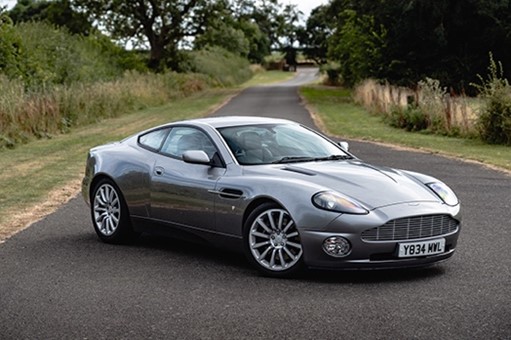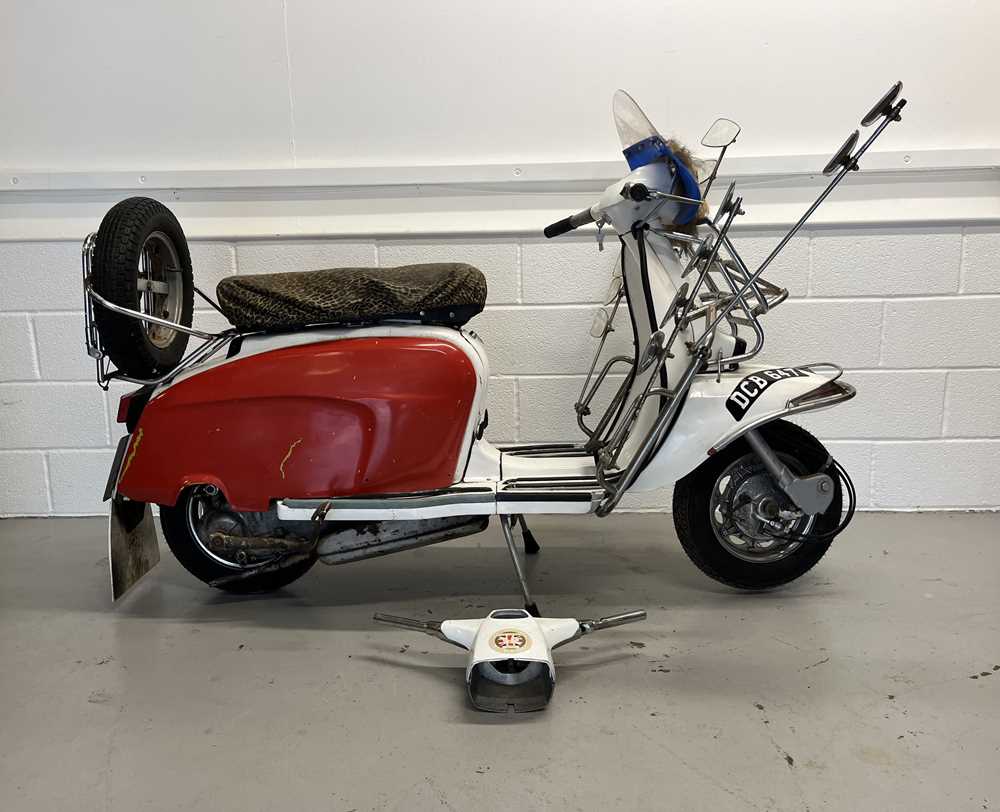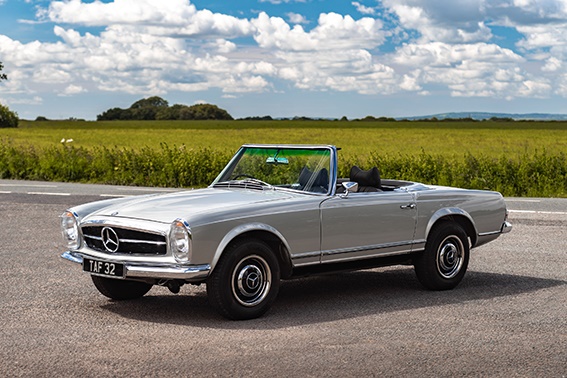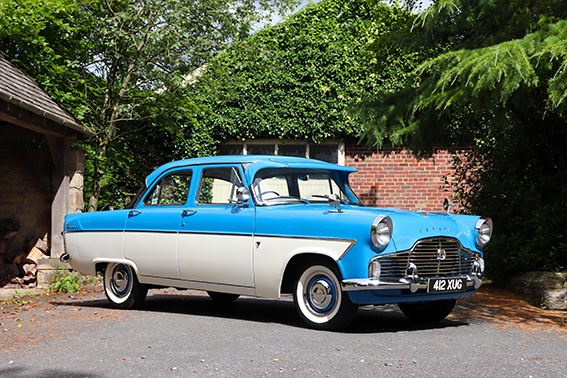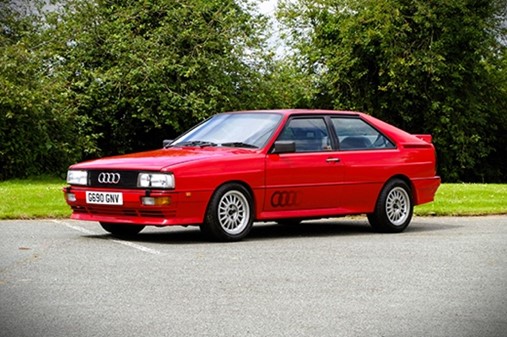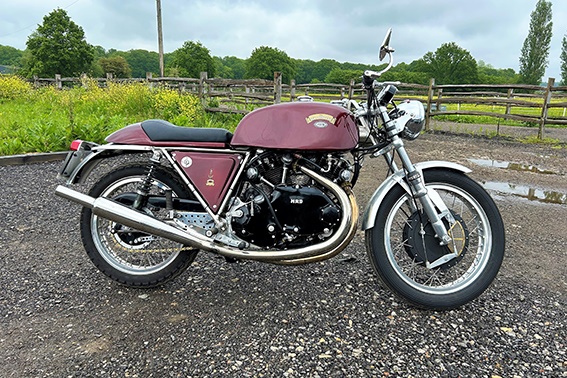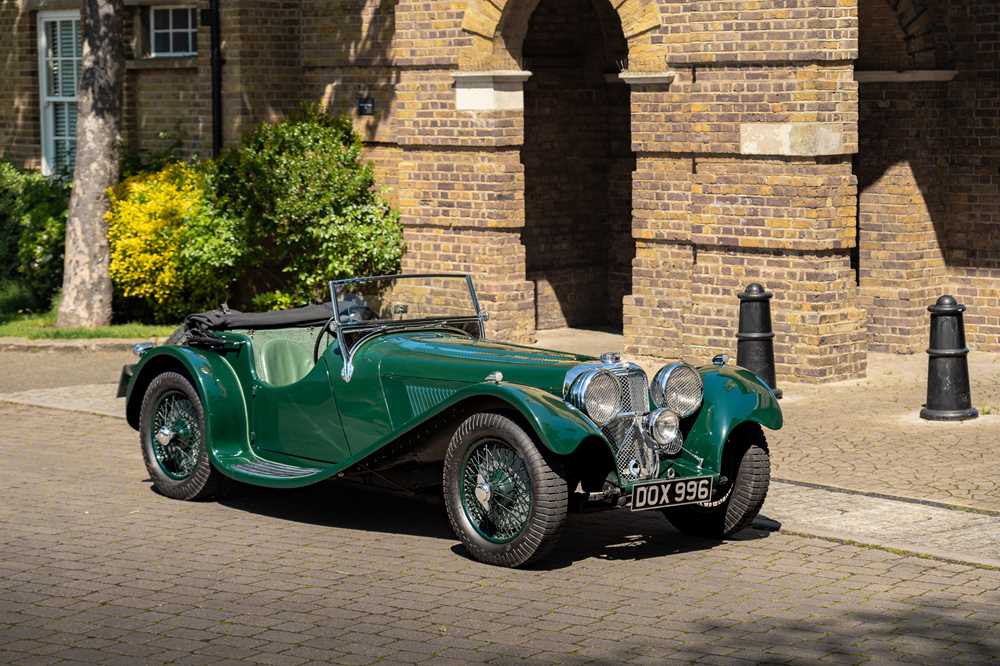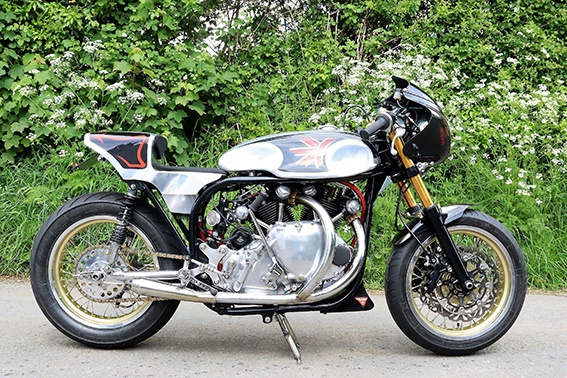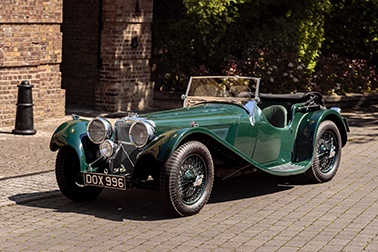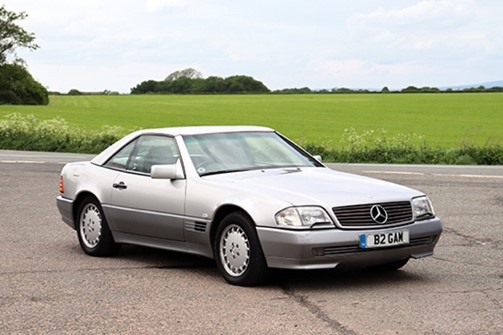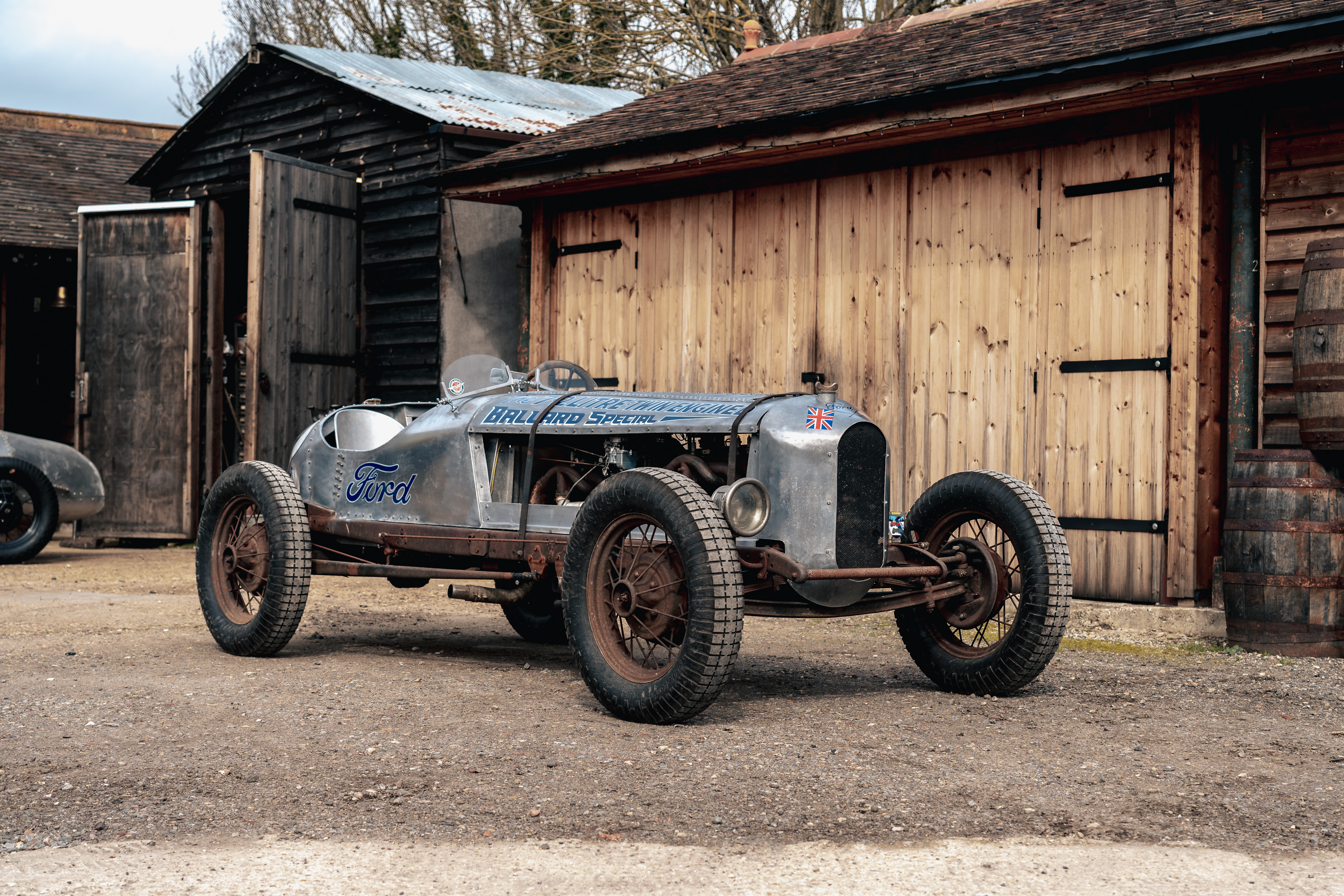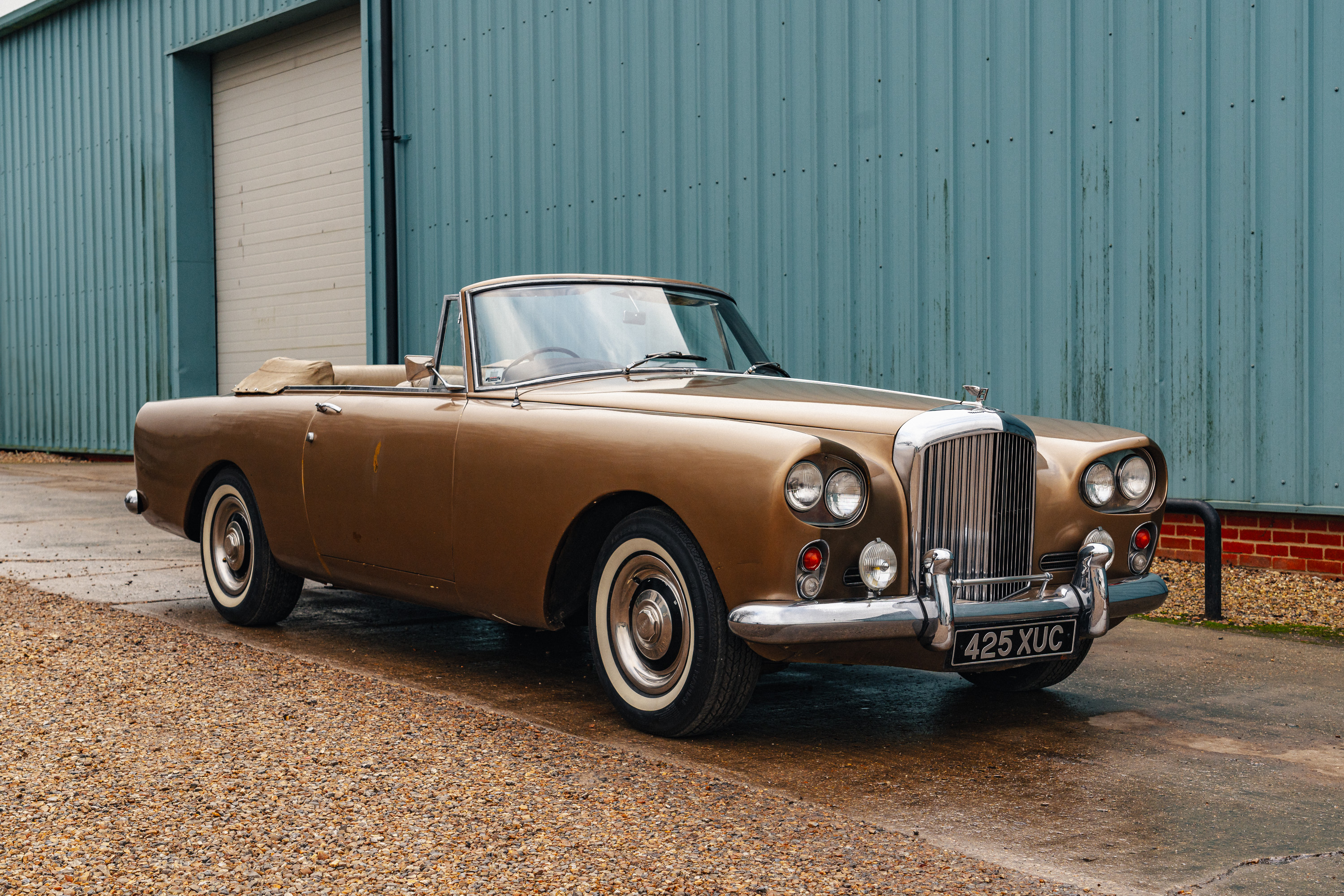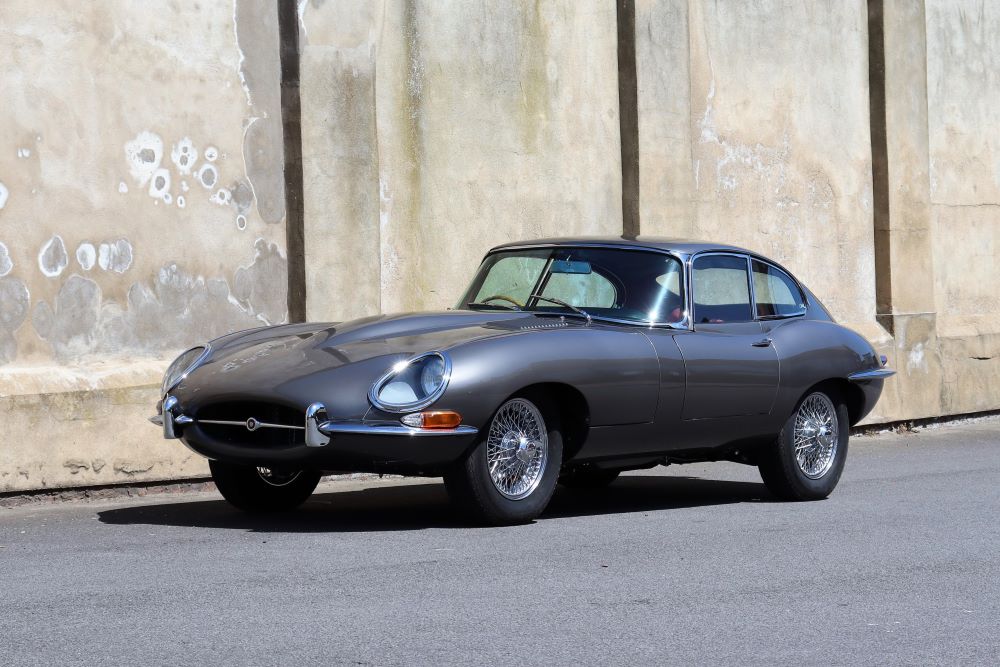Introduced in 1946, the Bentley Mark VI was the first post-war Bentley of Rolls-Royce design. Rolls-Royce survived the war in somewhat good health, as it produced aero engines for the Royal Air Force along with other engines for military vehicles. The first Bentley Mark VI was delivered to its owner in September 1946, 16 months after VE Day. It was powered by a new 4.3-liter F-head six-cylinder engine featuring overhead intake, side-mounted exhaust valves, and an aluminum alloy cylinder head.
26th May, 2021 13:00
Imperial War Museum Duxford
1948 Bentley MkVI Saloon
Fitted with James Young 'Design C11' Coachwork
1948 Bentley MkVI Saloon
Fitted with James Young 'Design C11' Coachwork
Sold for £23,625
(including buyers premium)
Registration No: KKL 847
Chassis No: B292BH
MOT: Exempt
- A highly original, matching numbers example and just 78,000 miles from new
- Just three owners from new with copies of much period correspondence
- The twelfth of just forty-nine MkVI vehicles fitted with elegant James Young 'Design C11' coachwork
The Mark VI was also the first Bentley with standard factory-designed bodywork built by the Pressed Steel Company, of Oxford, with ex-Gurney Nutting Chief Designer John Blatchley applying the refined detailing. The bodies were fitted to the chassis and trimmed and painted to a standard that rivaled the best coachbuilders. Custom coachwork, like that on this car, remained available at the buyer’s discretion. This was quite a change in philosophy by Bentley’s parent company, yet it reflected the reality that standardized bodies could be built in greater numbers at its new factory in Crewe, England. Through 1952, there were 4,949 examples of the Mark VI produced. Both a lovely and stately automobile, Mark VIs boasted of a separate chassis featuring coil-spring independent front suspension, quite an engineering advance in its day.
Sporting handsome aluminum coachwork by James Young, Ltd, considered by many to be the builder of the most handsome bodies to be worn by Rolls-Royces and Bentleys, chassis number B292BH carries body number 1911 and design C11 from the London coachbuilder.
With just two previous keepers and 78,000 genuine recorded miles, KKL 847 is finished in black with beige leather upholstery and is complemented by brown piping and carpets. It is one of just forty-nine examples produced to this configuration and was supplied new via Jack Barclay Ltd at a cost of £5,550. The purchaser was Charles Soukup - Czechoslovakian-born Managing Director of Richard Klinger Ltd (Sidcup, Kent). Described in a James Young inter-departmental memorandum as a 'man of very small stature', Soukup was clearly a demanding individual and supplying a vehicle to his exacting standards proved to be an onerous task for all parties involved. Copies of much period correspondence relating to the various (fairly trivial) issues encountered throughout his two year ownership are included within the car's history file. By October 1950, KKL 847 had passed into the hands of Norfolk farmer Stephen Farrow Esq. It remained in his custodianship until the car was offered for sale at auction, consigned by his family in a non-running state, during the Spring of 2013. By this time, the car is thought to have spent approximately 23 years off the road, however dry storage in one Mr. Farrow's barns did a great job of preserving the superb patina. The current owner purchased the car at the auction and expeditiously set about putting it back into road-worthy order - this process was fully documented. This recommissioning included the removal and cleaning of the fuel tank, overhaul of the fuel pumps (by Burlen Services), replacement of brake seals and hoses and repainting of the front and rear wings in cellulose. A new set of Dunlop RS5 tyres were also fitted at this stage and the car is understood to now run and drive very well.
Retaining its original registration number, KKL 847 comes with its RREC chassis records and offers a unique opportunity to purchase a highly-original coachbuilt Bentley. The new owner can either enjoy this stylish and imposing saloon in its tatty, yet structurally solid and mechanically-sound guise, or embark on a worthwhile restoration project to put it back to factory fresh condition. A lot worthy of close inspection.
Vendor Condition Ratings:
Bodywork: 'Very Good’
Engine: 'Good'
Electrical Equipment: ‘Good’ (electric blind not working)
Paintwork: ‘Poor to Average'
Gearbox: 'Good'
Interior Trim: 'Average to Good'
For more information, please contact:
Adam Sykes
adam.sykes@handh.co.uk
07429 600332
Auction: Imperial War Museum Duxford, 26th May, 2021
AUCTION VENUE
Imperial War Museum
Duxford
Cambridgeshire
CB22 4QR
AUCTION VIEWING
Tuesday 25th May from 12pm to 6pm
Wednesday 26th May 2021 from 9am
BUYERS PREMIUM
12.5% (plus VAT @ 20%)
Click here to view the Catalogue
All successful bids must be paid in full by midday the day after the auction at the latest.
You can collect your new pride and joy from our venue until 1pm the day following the sale or our partners are on hand to help arrange safe transportation:
Do you have an item to sell?
If so, contact one of our friendly specialists for your free valuation by completing the form below and someone will get back to you as quickly as possible.
If you prefer to speak to humans, don't hesitate to call our office on +44 (0)1925 210035
Other lots in this sale
